May 8 - 14 2016: Issue 262
Lighthouse Keepers Cottages You Can Rent in NSW: Six Towers By or Inspired by Colonial Architect James Barnet
The NSW Government's Department of Planning and Environment is celebrating 200 years of public architecture and government architects:
Celebrating 200 years of public architecture in NSW
04.05.2016: Featured Article - Department of Planning and Environment
In 1816, Governor Lachlan Macquarie appointed architect, stonemason and convicted forger Francis Greenway as civil architect and assistant engineer to the colony of NSW. The appointment established the role of NSW Government Architect (GA) which has endured unbroken for 200 years.
The GA bicentenary takes place at a time of momentous change as NSW, like the rest of Australia and indeed the world, faces the challenge of creating a sustainable future, particularly in the cities and towns where most of us work, live, learn and play. What sort of places do we want our cities and towns to be? How can we achieve that?
Recent research shows that Australians want good design and understand the consequences of a poorly designed built environment. How do we honour this ambition?
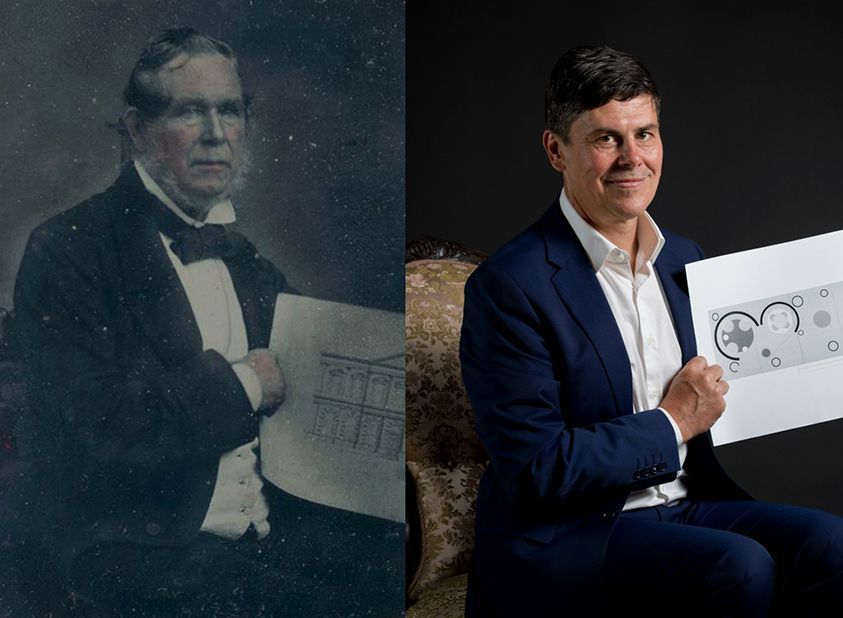
NSW Government Architect No.5 Mortimer Lewis circa 1860 and current NSW Government Architect Peter Poulet
To give shape to this debate, the NSW Office of the Government Architect (NSW OGA) is launching GA200+, a program of forums, discussions and keynotes in Sydney and regional NSW for government, industry, researchers and the public about how we can collectively deliver a great built environment for the public good in the years ahead.
GA200+ commences Wednesday 4 May 2016 with a symposium at the State Library of NSW, coinciding with the final week of the Library’s exhibition Imagine a City: 200 Years of Public Architecture in NSW. Keynote speakers are Vicente Guallart of Guallart Architects, former Chief Architect, Barcelona, 2011-2015, and Jeffrey Schumaker, Chief Urban Designer and Director of Urban Design, New York City.
Strategic themes brought to light at GA200+ will be presented in discussion papers to inform an inaugural, draft Policy for Architecture and Urban Design in NSW.
More information about the GA200+ program will be available shortly.
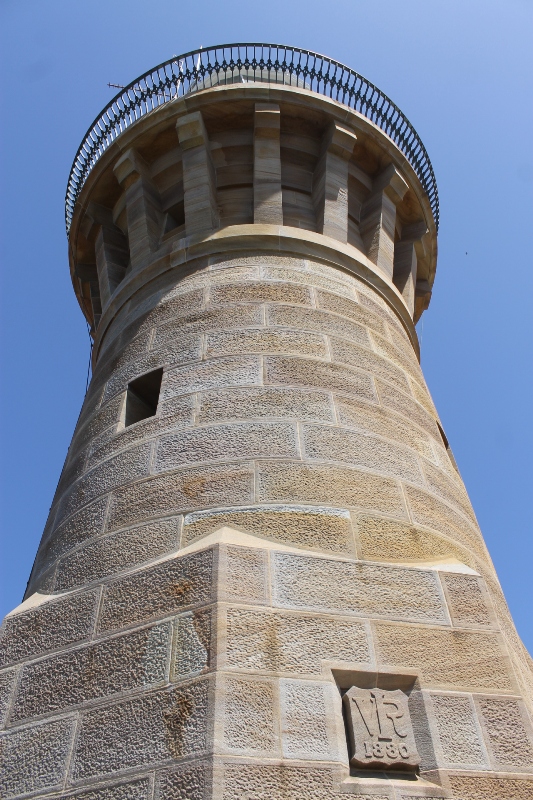 Recent developments have inspired other research, more current, and presented an opportunity to collate a focus on one particular short list of these ships of light.
Recent developments have inspired other research, more current, and presented an opportunity to collate a focus on one particular short list of these ships of light.Across Australia, since the cessation of having 'manned' lightstations, the renting out of the lightkeepers premises has become a means for the state governments to generate income, with these premises available to rent 7 days a week at prices ranging from around $500 or more per night. As the cottages are adapted to accommodate an average of six persons per structure, this becomes a cheap and viable alternative to what can be expensive rental for a room in these areas, although some are attractive because they are isolated, in national parks, and provide an alternative to canvas for those who like a firm roof over their heads when the rains come or those who seek an authentic 'step back in time' experience.
In New South Wales there are six you may currently rent out: Cape Byron, Montague Island, Smoky Cape, Green Cape, Norah Head and Sugarloaf Point (also known as Seal Rocks lighthouse).
Sugarloaf Point Light, 'lit' in 1875, Montague Island Light in 1881 and Green Cape Lighthouse following in 1883, are the oldest among these. Norah Head Light, opened in 1903, is the youngest as well as the last lighthouse of the James Barnet style to be built, and the last staffed lighthouse constructed in New South Wales. Smoky Cape Lighthouse was completed in 1893 and Cape Byron in November 1901.
Five of these lightstations and lighthouses are made of concrete or from cement blocks, while Montague is made from granite blocks that were quarried on the island.
The Cape Byron Lighthouse precinct is open 8am to sunset. A Maritime Museum in the former Lighthouse Keeper’s office at the base of the lighthouse is open 10am to 4pm daily. Park entry fees incur a daily rate of $8 per vehicle/$4 motorcycles at the Cape Byron Lighthouse and Information Centre carpark.
The Assistant Lightkeepers cottages are available to hire on a day, or days or weekly basis, 7 days a week. Cape Byron Lighthouse precinct, as with many of these others listed is also available for events and function hire, such as weddings, and during these times exclusive, or excluding the public, access is guaranteed.
As a unique Wedding venue, as listed on the Sugarloaf website, the promise is, "Your booking ensures exclusive use of the cottages and their grounds… giving you three outdoor and indoor options for your wedding ceremony."
At Sugarloaf the Head Keeper's and both Assistant Lightkeepers cottages are available. They may be rented as single structures or people may rent all three. Vehicles are permitted to drive to the cottages for loading and unloading. In Summer a minimum of 7 days booking is required, while Easter and Spring and Autumn require a minimum of three days for a weekend booking and four days for a 'midweek' booking. What is termed as 'Whale Season', which we are heading into now (May to September) attracts a rate close to that charged during Summer peak holidays.
Minimum booking of days also applies to other rental lightstation premises.
Mark Sherriff also spoke on the ABC 720 Radio Program about Sugarloaf, a great insight where you can hear the ocean in the background - listen in here
Below runs a few historic aspects and records about each of these lighthouses, from youngest to oldest, with an average of cottage accommodation available for up to 22 people in these, around half that of what is slated for Pittwater's Barranjoey, where up to 40 people may be provided with exclusive access all year round. Barrenjoey remains, at present, one of the few lightstations still easily accessed, being on the perimeter of Sydney and a place anyone may walk to. For decades Barrenjoey has been the place for dawn pilgrimages to greet the sun and 360 degree views, and a wonderful site for midnight stargazing, for local residents and visitors alike.
A little on the grand views of the six others currently available to rent:
Norah Head Light: Lit 1903
Norah Head Light is an active lighthouse located at Norah Head, a headland on the Central Coast, New South Wales, Australia, close to Toukley. It is the last lighthouse of the James Barnet style to be built, and the last staffed lighthouse constructed in New South Wales.
Officially displayed for the first time in 1903, the original vapourised kerosene burner was upgraded in 1923, electrified in 1961 and automated and demanned in 1994, after more than 90 years of being staffed. It celebrated its centenary in 2003.
The concrete block tower is 27.5 metres (90 ft) high, topped by a bluestone gallery. On top of the gallery is the original Chance Bros. lantern. This lantern holds the original housing of the Chance Bros. 1st order bivalve dioptric Fresnel lens. Other important structures include the chief lightkeeper's cottage and assistant keeper's duplex, and a flag house.
Calls for construction of a lighthouse at Norah Head (then "Bungaree Noragh Point") were made as early as 1861 due to many wrecks occurring in the area. A notable supporter in the end of the 19th century was local landholder Edward Hargraves from Noraville. However, these efforts were fruitless for many years. The first formal recommendation to construct the lighthouse was made by the Newcastle Marine Board, just prior to its abolition, in 1897.
The lighthouse was designed in a style similar to the style of James Barnet, by his successor Charles Assinder Harding, who also designed Cape Byron Light and Point Perpendicular Light. It is the last to be designed in this style.
Construction commenced in 1901, undertaken by day labour. Materials were brought by boat and unloaded on a wharf constructed at Cabbage Tree Harbour for that purpose. The cost of the tower and cottages was nearly £24,000, £19,000 for the construction of the tower and £5,000 for the optical apparatus, a Chance Bros. 1st order bivalve dioptric Fresnel lens with 700 prisms.
The original light source was a vapourized kerosene burner and mantle generating a light intensity of 438,000 cd, visible for 18 nautical miles (33 km; 21 mi). The original mechanism was a grandfather clock-type mechanism with the counterweights going down a 100 feet (30 m) central column. The weights went down gradually as the light turned and had to be wound every half an hour. The light revolved every 10 seconds, and was floating in a mercury bath of more than 15,000 pounds (6,800 kg) to lessen the friction.
It was officially lit on 15 November 1903. The first keepers were N. H. Williams as chief keeper, with N. Hanson and S. Kells as assistant keepers.
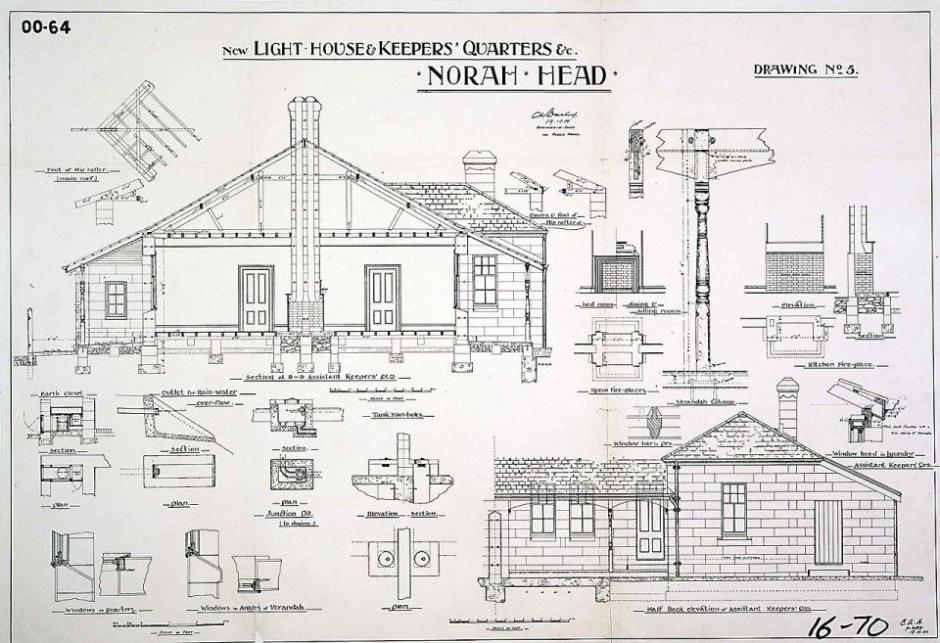
Norah Head Original plans of the keeper's quarters, 1900. Retrieved from National Archives of Australia:http://recordsearch.naa.gov.au/SearchNRetrieve/Interface/ViewImage.aspx?B=4957056&S=1
The lighthouse is a 27.5 metres (90 ft) tower, made from concrete blocks. The concrete blocks were made on the ground using a local aggregate, lifted and cemented into position and finally cement rendered inside and out with deep ashlar coursing, and painted white. This technique was used in the period to reduce the cost of construction.
On the inside of the tower there are 96 steps leading to the gallery in 4 stages, the first 3 of the same grade and the last stage a bit steeper and narrower. The staircase is made of concrete with slate treads and cast iron and brass balustrade.
On top of the tower is a bluestone gallery and balcony with gunmetal railings. The gallery has a painted cast iron floor grate with a cast iron stair leading to the outdoor gallery. The lantern room is atop this gallery, made of metal and glass, encircled and protected by perspex and aluminium panels. It has a decorative iron catwalk encircling the glass to allow for cleaning. The lantern house is the original 3,700 millimetres (150 in) Chance Bros. cast iron and copper lantern house, one of about 21 known to exist in Australia.
On the ground floor there is an entrance door made of cedar set with sidelights and fanlight, with an etching on the door glass saying Olim Periculum Nunc Salus, Latin for "Once Perilous, Now Safe". Above the door is the writing "•A1903D•", stating the year of official lighting. There is also a "ghost door" on the outside which was planned but never completed.
The first floor comprises an entry hallway and two rooms. The hallways is set with tessellated tiles and still has the original desk for the visitor's book. Of the two rooms, one was the report room used for administrative work, record keeping and logbooks. It is currently used as a radio room. The second room housed a spare mantle holder. It currently houses the electrical controls, including the sensors responsible for starting the light. It also houses the backup batteries, backup diesel generator and fuel tank, as well as a small workshop.
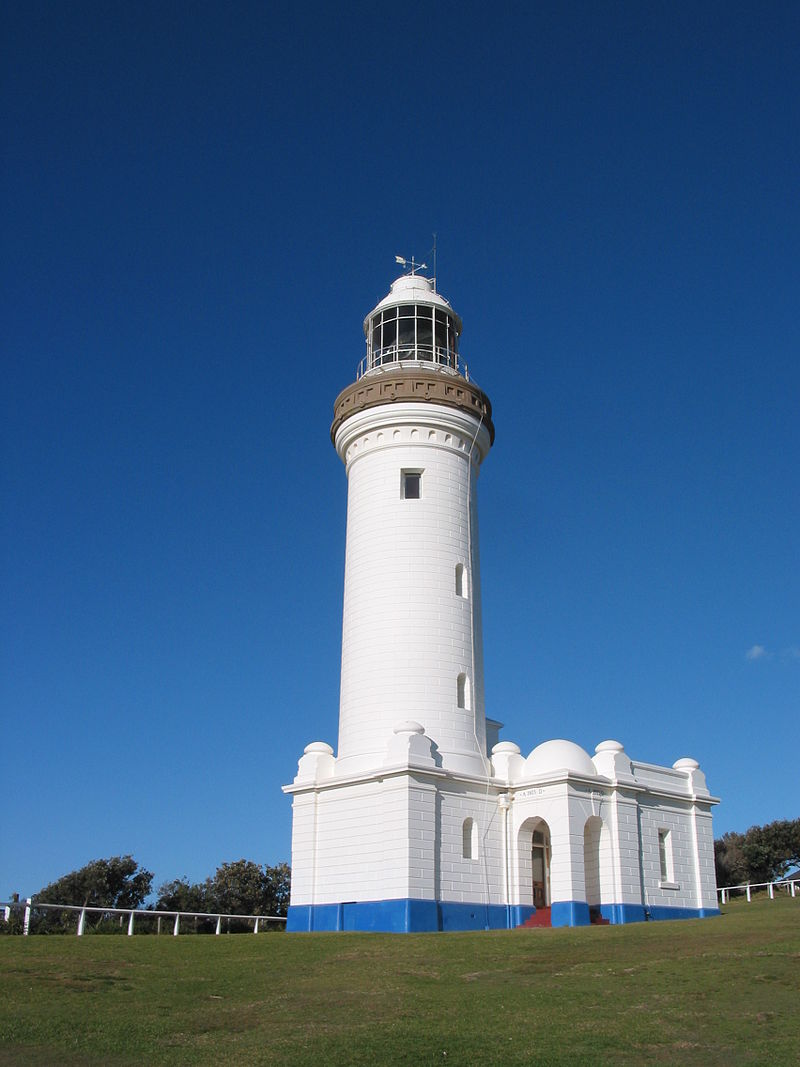
Norah Head Lighthouse, 2009, by and courtesy of Yun Huang Yong from Harbord
The accommodations in the complex consist of a lightkeepers cottage with garden and Assistant Keeper's duplex, both constructed from concrete blocks, unpainted from construction, and originally having "Marseilles pattern" terracotta tile roofs. The keeper's cottage includes an open verandah on three sides, with cast iron posts and curved timber beams. The hipped roof is still the original terracotta tiles and one chimney remains. The duplex: circa 1970 the roof was replaced with concrete tiles and the chimneys have been demolished.
Also constructed were a small fuel store, workshop, paint store and earth closet near the keeper's cottage, and two fuel stores with earth closet and sink for the assistant cottages. All were constructed in the same form, from unpainted concrete blocked and the same terracotta tile roofs. All still remain in the complex, pretty much intact.
As of 2010, one of the cottages is occupied by a resident keeper and another two are available for overnight accommodations.
Flag locker building at Norah Head Light.
Another structure at the complex is a small signal house, which was constructed as a flag house for the timber flagstaff, both constructed with the original structures in 1903. The flag house was constructed to match the lighthouse, from precast concrete blocks, rendered walls, with the same plinth and deep ashlar coursing. The roof is made of concrete in a shallow hipped form, in contrast to the concrete dome proposed in the original drawings. The flag locker now houses maritime signal flags. The timber flagstaff was removed at an unknown date, and what remains of it are a concrete and steel base, a concrete apron, and four concrete and iron anchor points.
A stable was also constructed at the premises from the same concrete blocks with Marseilles pattern terracotta tiles. In 1960, as the stables were being converted to a garage, the roof tiles were replaced with a concrete tiles. Three timber doors to the former stable, tack and carriage rooms remain.
Also at the complex are underground fresh water tanks and sealed off condensation water tank beneath the tower.
About 100 metres (330 ft) up the hill there used to be a weather station, a mother station for Montague Island in the south and South Solitary Island in the north. Reports used to be collected and sent to the Weather Bureau in Sydney. This is all done now electronically.
The lighthouse is on a narrow strip of land that separates the sea from Tuggerah Lake. The site is accessible and the lighthouse is open for guided tours on weekends and for group bookings during the week. Two cottages are available for overnight staying, housing eight people each. It is also available for weddings.
From: Norah Head Light. (2016, January 2). In Wikipedia, The Free Encyclopedia. Retrieved from https://en.wikipedia.org/w/index.php?title=Norah_Head_Light&oldid=697859376
Norah Head Light Accommodation website shows photos of the rooms within the cottages
Tarriff currently advertised as $255.00 week nights - $365.00 weekend rate per night
"The quarters are self-contained with everything that you need for a relaxing getaway or short stay and are their heritage listed to retain the original atmosphere. There are three bedrooms and sweeping verandahs; The bedding configuration for both quarters is King Zip Bed, Queen Bed plus 1 x King Single and Queen bed plus 1 x King Single. Rate covers 6 guests with an extra person rate of $20 per person per night, with a maximum of 8 guests. - See more at: http://www.norahheadlighthouse.com.au/accommodation
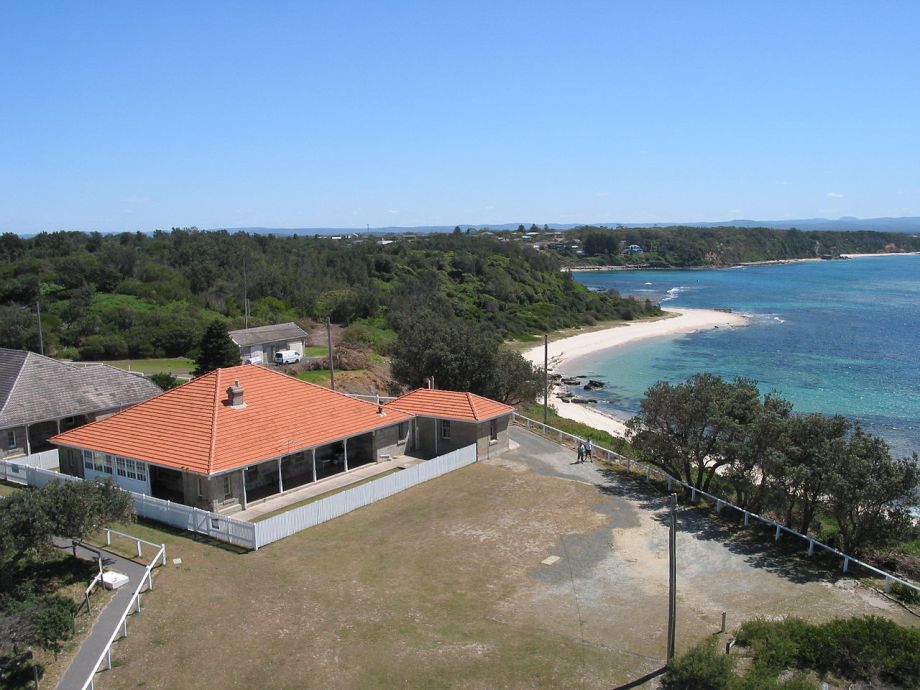
Cottages at Norah Head Lighthouse, view from the lighthouse by and courtesy of Yun Huang Yong from Harbord
Cape Byron Light: Lit 1901
Cape Byron Light is an active lighthouse located at Cape Byron, New South Wales, Australia. The cape is the easternmost point of the mainland of Australia, located about 3 kilometres (1.9 mi) northeast of the town of Byron Bay. It is Australia's most powerful lighthouse, with a light intensity of 2,200,000 cd.
The decision to proceed with building the light was made at the end of the 1890s, and the site was levelled in October 1899.
The tower was built by James Barnet's successor, Charles Assinder Harding, who also designed Norah Head Light and Point Perpendicular Light, in a style similar to Barnet's.
Construction of the site began in July 1900 by contractors Mitchell and King. The total cost was £10,042 pounds to the contractors, £8,000 for the apparatus and lantern house, and £2,600 for the road from Byron Bay township. Construction ended in 1901.
The lighthouse is built out of precast concrete blocks and painted white. The concrete blocks were made on the ground, lifted and cemented into position and finally cement rendered inside and out. This technique saved the need for on site quarrying. It was only the second lighthouse to be constructed in this method, the first being Point Perpendicular Light.
The tower is tapered, standing 74 feet (23 m) high, including the lantern. Ascending is done via an internal spiral concrete staircase with slate treads. It is topped by the iron floored lantern room. The lantern room has iron dado walls and the roof is domed, covered in sheet metal, and surmounted by a wind vane and a ventilator.
At the base of the tower there is an entrance porch, lobby and two service rooms, all having crenellated parapet walls, painted white with a blue trim on the bottom from the outside. The porch has a trachyte floor and steps, a cedar entrance door and etched glass panels and sidelights. The lobby has a tiled floor and trachyte steps, and the other rooms have asphalted floors and cedar windows.
Housing at the site includes the head lighthouse keeper's residence, and two assistant keeper's cottages (a duplex), which are available for overnight rental. Both structures were erected from precast concrete blocks in 1901.
Another distinctive structure is a small Flag Room, also constructed of precast concrete blocks. Also present are two garages, a workshop and public toilets. Some of the original fending is also extant.
Cape Byron Light. (2016, January 2). In Wikipedia, The Free Encyclopedia. Retrieved from https://en.wikipedia.org/w/index.php?title=Cape_Byron_Light&oldid=697853828
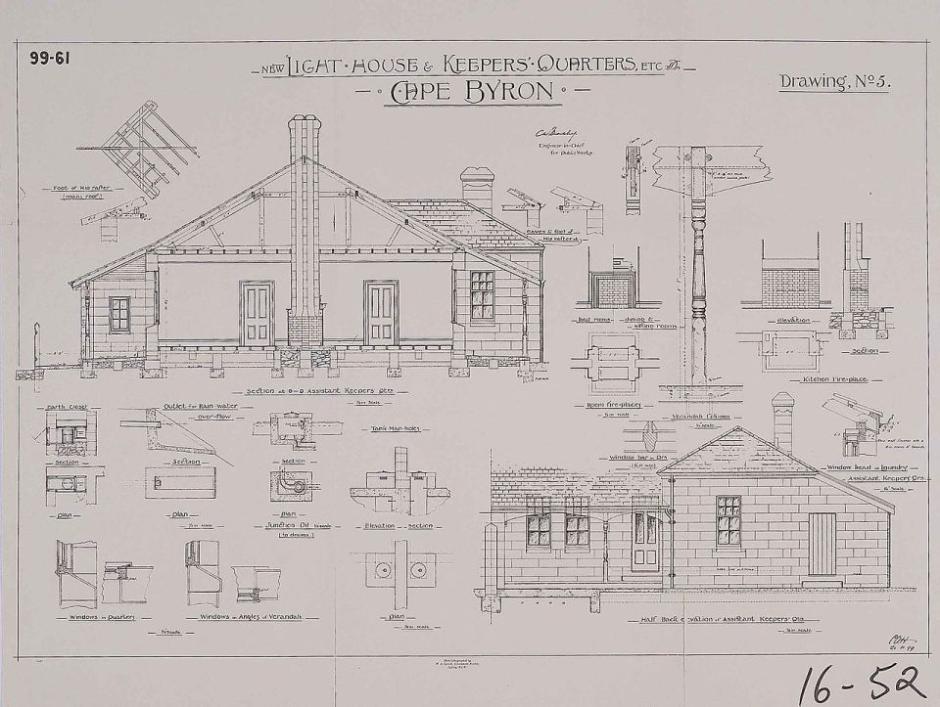
Above: New Lighthouse and Keepers' Quarters etc - Cape Byron, 1899 - Retrieved from National Archives of Australia:http://recordsearch.naa.gov.au/SearchNRetrieve/Interface/ViewImage.aspx?B=4957005&S=1
Below: Detailed plans for the tower and annexe, 1899, Retrieved from National Archives of Australia:http://recordsearch.naa.gov.au/scripts/Imagine.asp?B=1713096
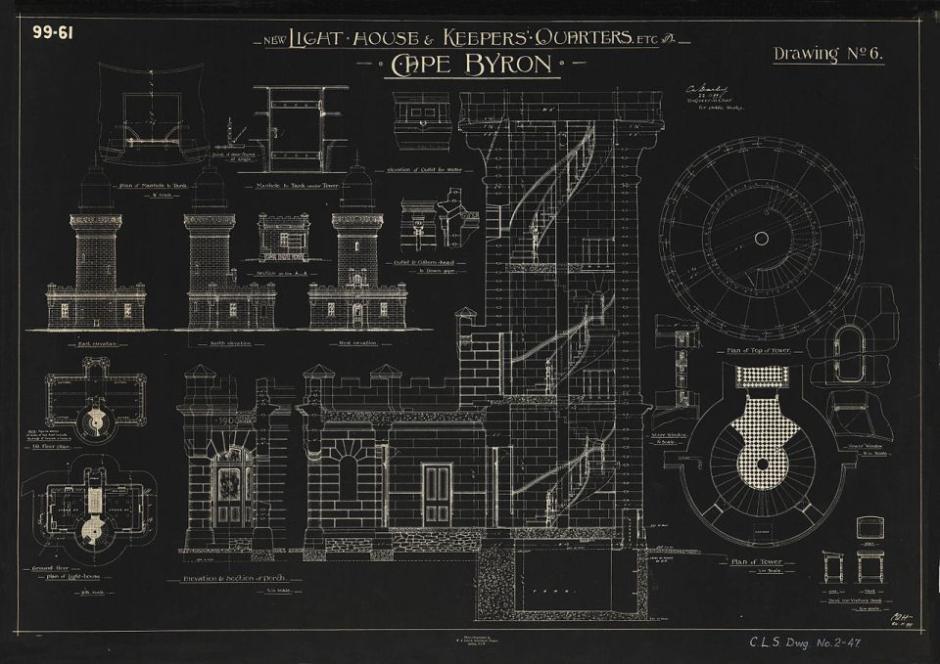
Cafe Byron lighthouse was formally opened on Sunday (November 1st, 1901) last by the Premier, in the presence of officers from the Harbors and Rivers Department, Captain Edie, of the Marine Board, several M.P.s, including the member for the district, Mr. Meagher, ex-members Messrs. Hogan and Crouch, and a large number of residents. The Parliamentary party were expected to arrive here on Saturday at 4 p.m., but through encountering a heavy north-east gale they did not reach here until 11 p.m., and landed at 9 a.m. on Sunday.
A representative number of residents were present to receive them. First of all they were driven to the North Coast Cooperative Factory, and afterwards to the lighthouse, where the ceremony of opening took place by breaking a bottle of champagne and making a few speeches. The Premier afterwards received a deputation from the Mullumbimby residents on the Queensland tick question. The Premier promised a closed border line if dipping was found not to make stock immune from the pest. A few local matters were discussed, but not with any definite promised redress. The party left by : the yacht Victoria at- about 1.30 p.m. the :;r ? same day, there still being a heavy sea running. Had the Premier and party — which consisted of about 10 members, half of whom remained on board through sickness during . the voyage — landed here at 4 p.m. on Saturday, it was the intention of the residents to give them a banquet, but the result was that they had to consume the banquet .themselves, 'with a blank toast list, the exigence putting the committee in a position they did not seem to effectually grasp very conveniently. BYRON BAY. (1901, December 6). The Richmond River Herald and Northern Districts Advertiser (NSW : 1886 - 1942), , p. 5. Retrieved from http://nla.gov.au/nla.news-article127888898
THE BYRON BAY LIGHTHOUSE.
On one of the four corners of Australia now stands a stately and handsome light-Louse, from which a powerful light flashes over the sea to warn the mariner, and also to tell him that he Is rounding the most eastern point of "the continent. Picturesquely there Is not a finer lighthouse In the State (records the "Sydney Daily Telegraph"). It Is quite an architectural ornament. The light, erected on a concrete tower, consists of a first order lantern, 12 feet In diameter, and of first order revolving bivalve, double flashing (pen Eclair) optical apparatus, manufactured by the Societe Des Establissment, Henry Lepante, Paris. The Intensity of the flash Is 145,000 standard English candles, and the apparatus rotates In a nlercury bath at the rate of one complete revolution In ten seconds, there being altogether six flashes per minute. In addition to the main light there Is a small fixed dioptric lamp in the tower on the floor, below the lantern room, to throw a subsidiary light over Juan and Julia rocks. The tower is 41) feet high from the ground to the floor of the lantern, and from ground to focal plane 61 feet. It is built of concrete blocks, rendered with cement, inside and out, and is divided Into three stories by concrete floors, paved with black and white tiles. The foundations of the tower are down In concrete to a depth of 8 feet below the ground, the space therein being utilised as a rain water tank of 3000 gallons capacity.
Outside of the lantern there Is an open gallery 4 feet wide, with a trachyte floor, paved with Vol de Travers asphalt, and a trachyte parapet wail. A flagstaff is provided for signalling purposes, and a flaghouse has been built of concrete. The flagstaff is 00 feet high. Telephonic connection Is made with the telegraph ofllce at Byron Bay.
Admirable quarters are provided for a principal lightkeeper and two assistants. The first work, of preparing the site, by levelling, &c., was commenced in October, 1899, and this part of the work was carried out by day labor at a cost of £2600. The main light is 371 feet above high water, and It Is visible at a distance of about 22 miles in clear weather. Cape Byron Is 345 miles from Sydney, and about 30 miles from the northern boundary of the State. A feature of the lighthouse Is the fact that the concrete used in Its formation was made from rocks at the bottom of- the precipice - which- It overlooks.THE BYRON BAY LIGHTHOUSE. (1901, December 21). Leader (Melbourne, Vic. : 1862 - 1918), , p. 33. Retrieved from http://nla.gov.au/nla.news-article196597358
THE BYRON BAY LIGHTHOUSE.
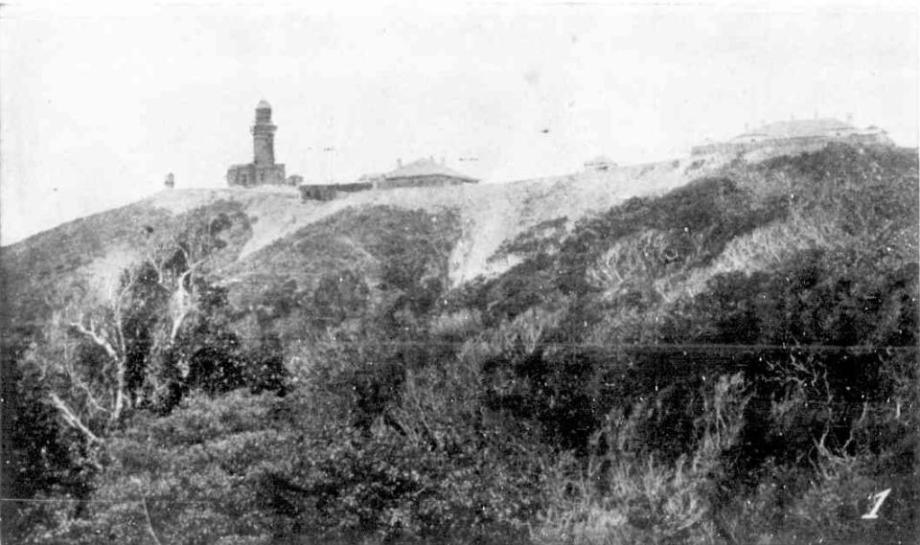
1. View from Byron Bay-road.
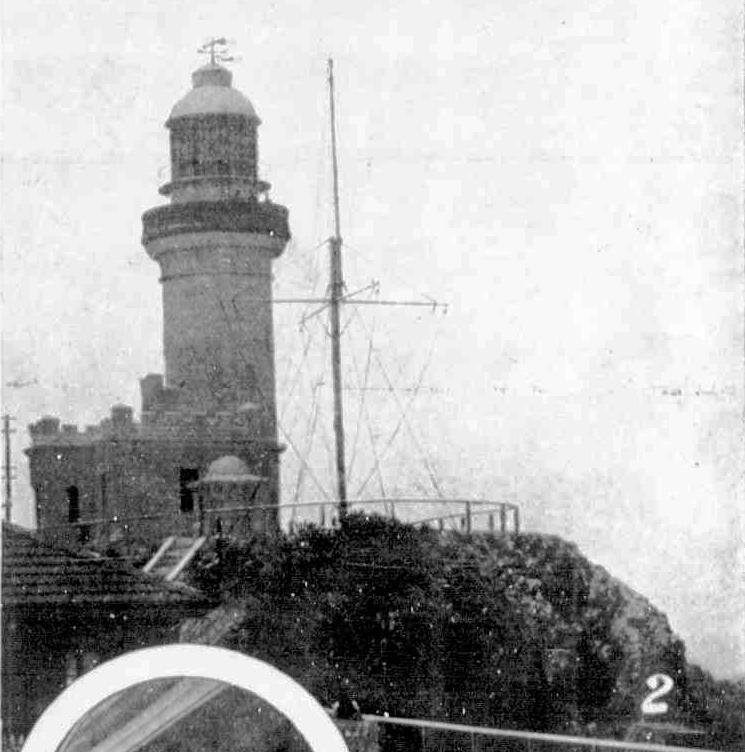
2. The Light House.
3. Keeper's Buildings from Light House. (below)
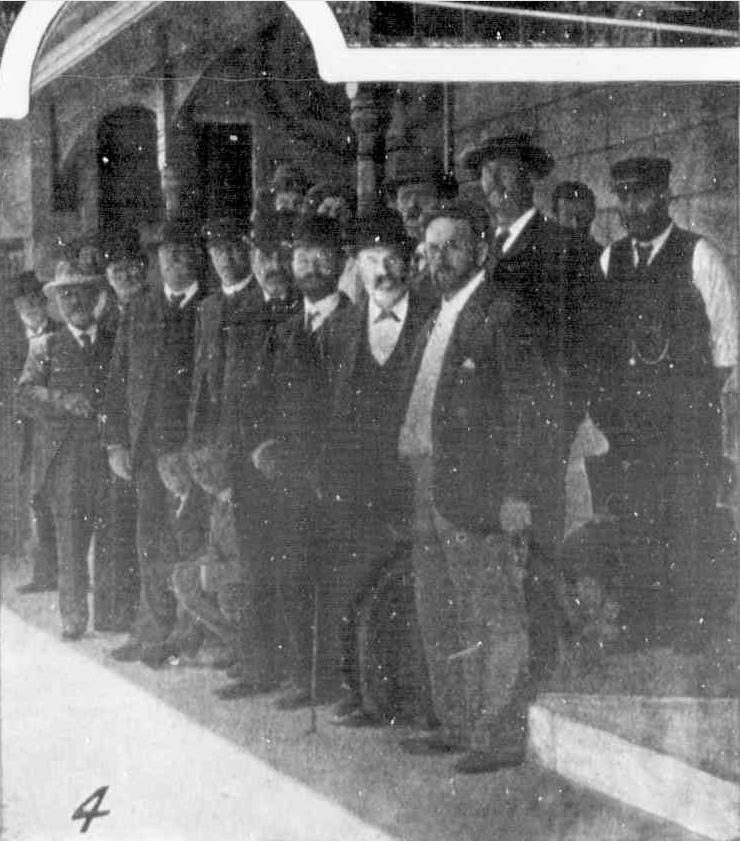
4. Ministerial Party. (Zutioni Studio, Lismore.)
THE BYRON BAY LIGHTHOUSE. (1901, December 21). Leader (Melbourne, Vic. : 1862 - 1918), , p. 36. Retrieved from http://nla.gov.au/nla.news-article196597023
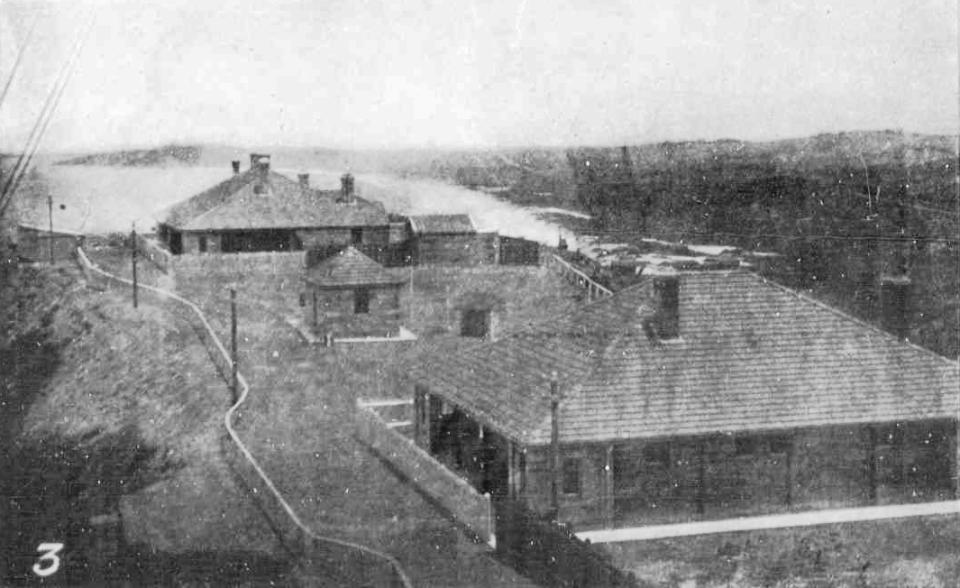
3. Keeper's Buildings from Light House. 1901
The Byron Bay Lighthouse.
(See illustration on page 30.)
BYRON BAY, Sunday.--The Government yacht Victoria, with the Ministerial party on board, did not reach ByronBay until shortly before 12 on Saturday night. The run up took nearly forty hours, being in the teeth of a north-easter, which was so strong at times that the yacht could not make more than seven knots an hour against it. Those on board, in addition to the Premier and the reporters, were Messrs. Meagher,. Quinn, E. Clark, S. Smith, Williams, Sleath, Broughton, and Anderson, M.L.As. Mr.See, after managing o 'scramble up the jetty, was loudly cheered by the residents and felt that he deserved to be. He was more formally welcomed at the Great Northern Hotel by Mr. J. W. Glasgow and other residents. The Premier expressed regret at not having been able, owing to the stress of weather, to have kept his engagement: on Saturday. He was also sorry-to undertake any public work on a Sunday ; but the circumstances made it unavoidable. The party then visited the North Coast Co-operative Butter Factory, a large.and splendidly conducted concern, which has an annual turnover of about one hundred and fifty thousand pounds.
Afterwards they were driven to the lighthouse. This is situated on Cape Byron, a bold headland, which has the reputation of being the most eastern point of Australia, and which commands a magnificent view of the illimitable expanse of the Pacific. It is approached by a steep, winding road, a couple of miles from the township. In appearance it is like all other lighthouses, and cost £ 18,000. From high water mark to the focal plane is 371ft. A light is visible at a distance of 22 nautical miles, and consists of a first order revolving bivalve, double-flashing opti cal apparatus. A small dioptric lamp below the lantern throws a subsidiary light over the Juan and Julia Rocks, to which, from Cape Byron, it is the ambition of the local residents to some day see a breakwater built, instead of the small scheme thrown out recently by the legislative Council. The Byron Bay light will flash for the first time to-night, the revolving machinery having been set in motion by the Premier, amid cheers. In performing the ceremony, he gave an account of the lighthouses along the New South Wales coast line of 600 miles, beginning with the Macquarie, and ending with the Byron Bay, a total number of twenty-four, while there had been, he said, up to the end of 1900, a total expenditure on lighthouses of £253,000. He claimed that the coast was now well lit up, and the dangers of navigation reduced to a minimum; that, although the expenditure had been large, it was nothing in comparison with the importance of making clear one of the important highways to the East such as our coast was. It may be added that the residents did all in their power to make the Premier's visit an enjoyable one, but the banquet arranged for Saturday was not graced by his presence. Hoover the viands were duly disposed of by the residents, and the health of the Premier and party toasted in their absence.
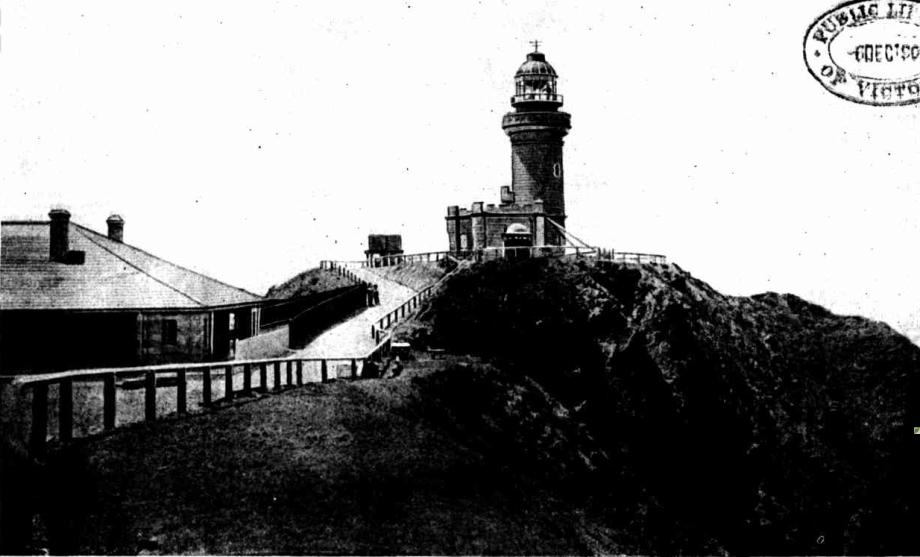
The New Lighthouse at Cape Byron. A lighthouse has just been completed on Cape Byron, N.S.W., the most easterly point of the Australian mainland. The whole work will cost about £20,000. The Byron Bay Lighthouse. (1901, December 7). Australian Town and Country Journal (Sydney, NSW : 1870 - 1907), , p. 30. Retrieved from http://nla.gov.au/nla.news-article71475542
VIEW FROM CAPE BYRON LIGHTHOUSE.
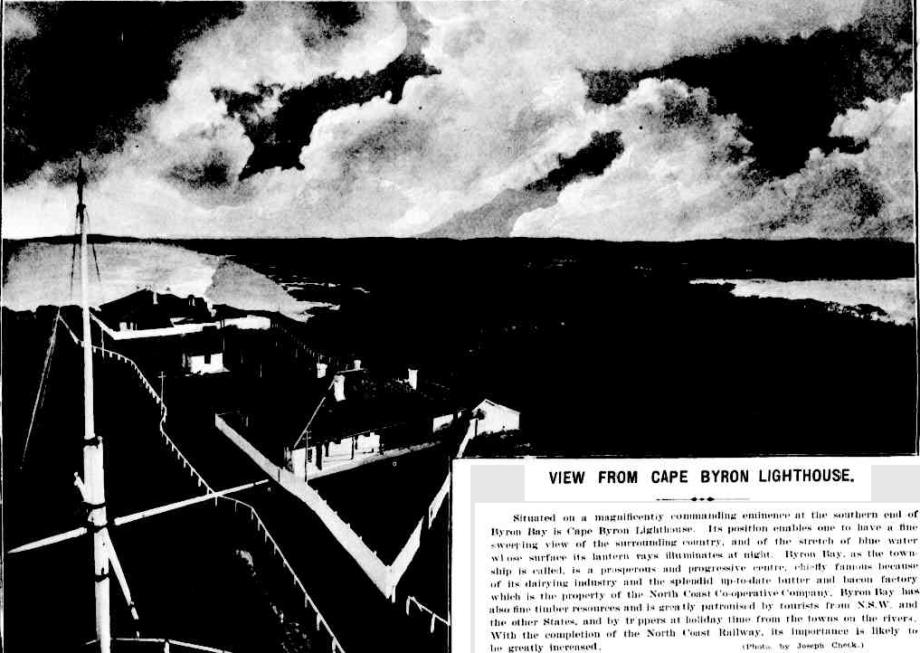
Situated on a magnificently commanding eminence at the southern end of Byron Bay is Cape Byron Lighthouse. Its position enables one to have a fine sweeping view of the surrounding country, and of the stretch of blue-water whose surface its lantern rays illuminates at night. Byron Bay, as the town-ship is called, is a prosperous and progressive centre, chiefly famous because of its dairying industry and the splendid up-to-date butter and bacon factory which is the property of the North Coast Co-operative Company. Byron Bay has also fine timber resources and is greatly patronised by tourists from N.S.W. and the other States, and by trippers at holiday time from the towns on the rivers. With the completion of the North Coast Railway, its importance is likely to be greatly increased. (Photo, by Joseph Check.)VIEW FROM CAPE BYRON LIGHTHOUSE. (1907, September 18). Australian Town and Country Journal (Sydney, NSW : 1870 - 1907), , p. 29. Retrieved from http://nla.gov.au/nla.news-article71596678
50% off Cape Byron Lighthouse Cottages!
NPWS: May 5, 2016
Book 3 nights or more in one of the stunning Cape Byron Lighthouse Cottages before 31 May to receive 50% off during stays between 2 May and 30 November 2016. 50% off when you book in May
Ever dreamed of living in a lighthouse? Now you can get a taste of it with a holiday at one of the state’s most popular whale watching hotspots – the award-winning Assistant Lighthouse Keeper's Cottages in Cape Byron State Conservation Area.
Offer details: Early bird offer: 50% off when you book in May. Promotion period: Valid for stays between 2 May to 30 November 2016
Minimum stay: 3 nights
Price: With prices starting from $180 per night (normally from $360 weekdays and $500 on weekends), your 3 night getaway can cost as little as $540.
Accommodation details
Where: Assistant Lighthouse Keeper's Cottages in Cape Byron State Conservation Area
Accommodation: 2 cottages available. Bedrooms: 3 per cottage Maximum guests: 6 per cottage. Bedding configuration: 1 x queen; 1 x queen; 2 x singles (cot hire available).
This rare offer is available this whale watching season and is a great opportunity to enjoy a unique coastal getaway with family or friends. Wake up to panoramic views of golden beaches, dramatic coastline and take a guided tour of the iconic Cape Byron Lighthouse.
The Assistant Lighthouse Keeper's Cottages have been lovingly restored to retain their heritage charm, with the addition of modern conveniences to ensure you holiday in style. After a day of whale watching, swimming and walking, cook up a feast and toast the lighthouse keepers of days gone by.
Available to hire 7 days a week!
HISTORY OF THE CAPE BYRON LIGHTSTATION PRECINCT
© Crown copyright 2008. Author - Dr Brett J Stubbs - Available in PDF - HERE
Assistant Lighthouse Keeper's Cottage, Cape Byron State Conservation Area
Published on 23 May 2012 by NSW National Parks and Wildlife Service
The heritage listed Assistant Lighthouse Keepers' Cottages at Byron Bay feature stunning coastal views. They're a great choice for a weekend getaway or longer holiday.
Smoky Cape Lighthouse: Lit 1891
Smoky Cape Lighthouse is an active lighthouse located on Smoky Cape, a headland east of the town of South West Rocks, New South Wales, Australia, and within the Hat Head National Park. It directs boats towards the entrance to the Macleay River, which is located just to the north of the lighthouse.
It is one of the last major lighthouse complexes designed by the New South Wales colonial architect of the time, James Barnet, and was one of Australia's last lighthouses to be designed for architectural excellence. Standing on a granite headland 140 metres (460 ft) above the sea, its light is the highest in New South Wales.
Smoky Cape Lighthouse - photo by and courtesy of Sterry2607
The lighthouse was first proposed in 1886 to ensure the safety of the increasing coastal traffic on the northern seaboard of New South Wales, and was completed in 1891. The contract to build it was won by William Frank Oakes but he died during construction and the work was completed by his executors. As a result of the Commonwealth Lighthouses Act of 1911, management of the lighthouse was transferred in 1915 to Federal control because of its status as a coastal light.
Since 1939, the lighthouse has been an Australian Bureau of Meteorology site for the gathering of climate statistics.
During the World War 2, the lighthouse precinct was used for military purposes. There was a searchlight battery and light gun emplacement, and possibly a radio room, operating there at that time. The concrete remains of the military installation are still visible.
In 1962 the light was electrified and around 1988 it was automated. The optic system is still the original first order Fresnel lens.
On May 14, 1998, Smoky Cape was the first NSW Parks and Wildlife Service lighthouse to be opened for tours.
The lighthouse's design is unusual for its octagonal tower, and was so designed because it was easier to cast the tower in the octagonal formwork than round formwork.[4] It has a single story pavilion entrance, cast iron staircase and distinctive gunmetal balustrade. It is one of only three nineteenth century mass concrete lighthouses in NSW (the others being South Solitary Island Lighthouse and Green Cape Lighthouse). The fact that it has its original Chance Brothers revolving apparatus and lens, and lantern house, makes it an important example of late nineteenth century industrial maritime technology.
The lighthouse is operated by the Australian Maritime Safety Authority and is classified by the National Trust of Australia (NSW).
Its nearest lighthouses are South Solitary Island Lighthouse north of Coffs Harbour, to the north, and Tacking Point Lighthouse at Port Macquarie, to the south.
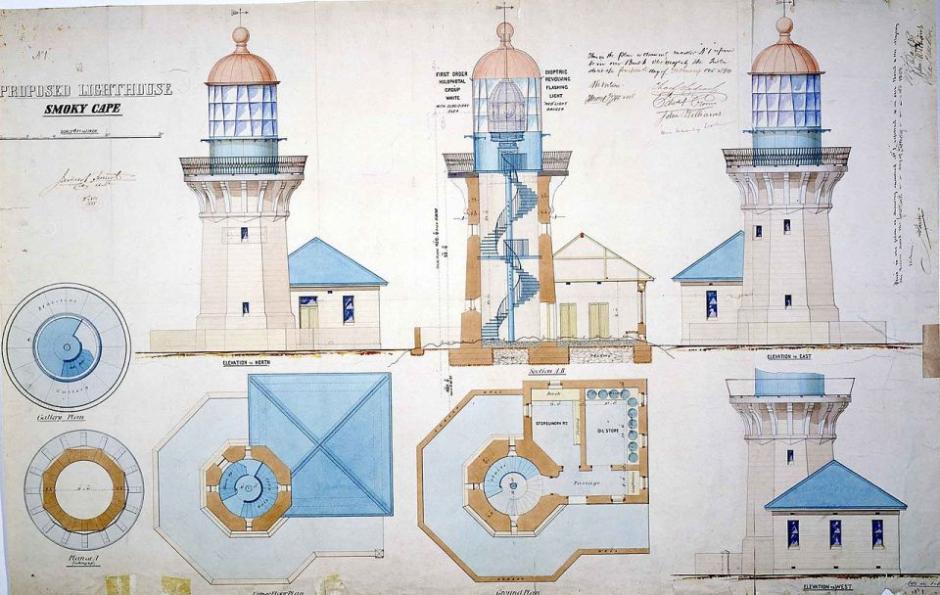
Above: Smoky Cape Light, lighthouse plans, by James Barnet - NSW Colonial Architect, 1888. Retrieved from National Archives of Australia: http://recordsearch.naa.gov.au/scripts/Imagine.asp?B=4957070
Below: Smoky Cape Light, plan of keepers' quarters, James Barnet - NSW Colonial Architect, 1888. Retrieved from National Archives of Australia: http://recordsearch.naa.gov.au/scripts/Imagine.asp?B=4957071
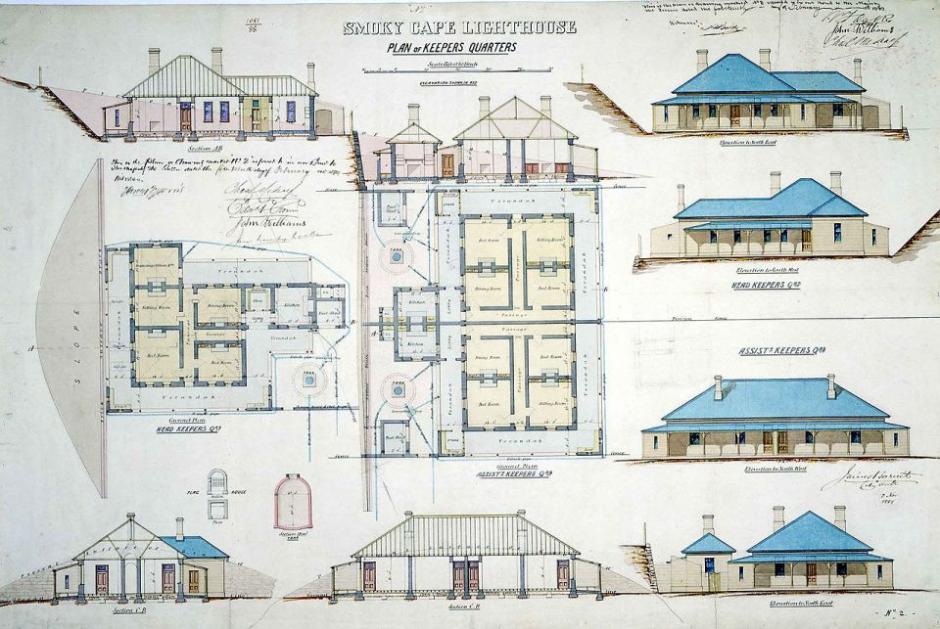
SMOKY CAPE LIGHTHOUSE.
The secretary to the New South Wales Marine Boards sends the following notice to mariners:- "referring to the Gazette notice of the 12th November. 1889. it is now notified, for general Information, that on and after the night of Wednesday, the 15th instant, a fleet order triple-flashing dioptris white light will be shown from the tower which has been erected on Smoky Cape at an elevation of 420ft., in latitude 30-56 S. and longitude 153*6 E. This light will exhibit the following chracteristics every half-minute, viz::- Finish 2 seconds, eclipse 2 seconds, flash 2 seconds, eclipse 2 seconds, flash 2 seconds, eclipse 20 seconds, and will be visible all round from seaward about 30 miles in ordinary weather." SMOKY CAPE LIGHTHOUSE. (1891, April 9). The Sydney Morning Herald (NSW : 1842 - 1954), , p. 6. Retrieved from http://nla.gov.au/nla.news-article13820530
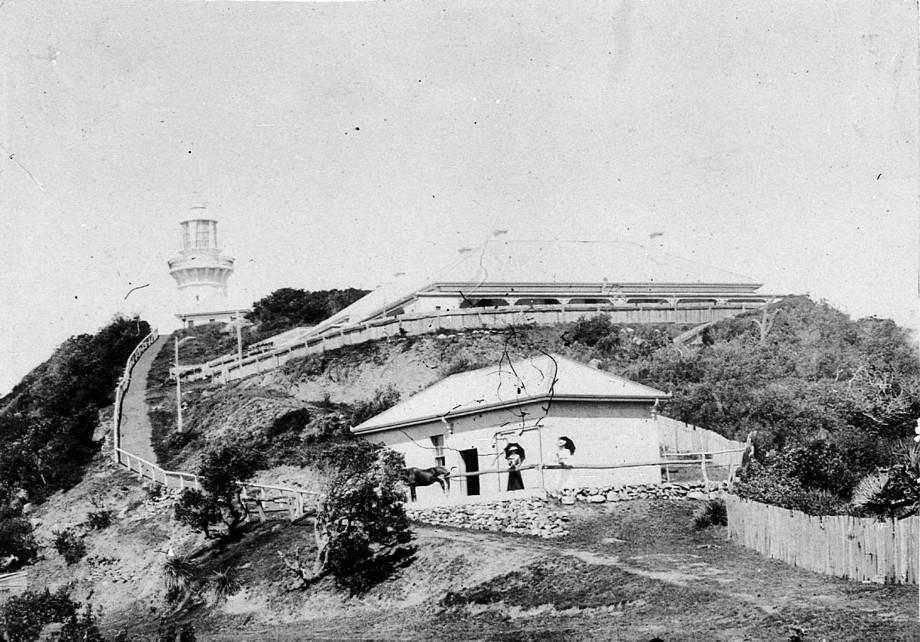
Smokey Cape near South West Rocks, NSW - Horse stable in foreground, Image No.: bcp_04302, courtesy State Library of NSW.
The Smoky Cape Lighthouse accommodation website states that the Head Lighthouse Keepers is a Bed and Breakfast with two bedrooms, while the two Assistant Lightkeepers cottages are available to rent. Each cottage sleeps six people and all have been modified so modern kitchen facilities have been installed.
The tariffs are $500 for 2 nights on a weeknight, May to September, which increases to $600.00. Weekend rates are $580.00 for 2 nights and this becomes $675.00 for the the 2 nights. School Holidays, Easter and Summer peaks attract higher charges (currently advertised as $1850.00 per cottage for the 7 days).
More information is available at: www.smokycapelighthouse.com/index.htm
Smoky Cape lighthouse
Published on 27 Mar 2013 by NSWNatParks
Green Cape Lighthouse: Lit 1883
The Green Cape Lighthouse is a lighthouse located at the tip of Green Cape, a headland forming the northern boundary of Disaster Bay, in southern New South Wales, Australia. It is the southernmost lighthouse in New South Wales and Australia's first lighthouse built in concrete. At 29 metres (95 ft) it is also the second tallest lighthouse in New South Wales.
The need for lighthouse was approved in 1873, following a series of wrecks on the southern shore. After rounding Cape Howe, northerly ships would hug the shore to avoid the East Australian Current. Green Cape was the first major projection they would encounter. Original tenders were for a stone lighthouse and rubble quarters. However, with the soft local sedimentary, no one tendered. In 1870 the specifications were changed to concrete and a budget of £17,000 AUD was set.
The tower was designed by James Barnet in 1880 and the contract was awarded to Albert Aspinall who quoted £12,936 in December 1880. The tender was for the concrete tower, two houses of double brick with cement render, and associated structures.
Aspinall first had to find a way to move the materials from Eden to the site. The nearest safe anchorage was in Bittangabee Bay, north along the coast from Green Cape, where he built his storeroom and jetty. He then spent five months building a 7 kilometres (4.3 mi) wooden tramway from Bittangabee Bay to the cape. Materials were transported to the site on wooden trolleys pulled by horses. This first phase was complete in June 1881, and Aspinall commenced the construction.
Major problems were encountered when the site was found to lie on a 6 metres (20 ft)white clay belt, forcing the foundation to be dug to 9 metres (30 ft). Work stopped in June 1883 due to financial difficulties, and Aspinall's creditors completed the project, which was lit on 1 November 1883.
The form, octagonal on a square base, was chosen to ease the construction of the formwork. The tower has a bluestone gallery. A small room is attached to the western side, originally meant to be an oil store.
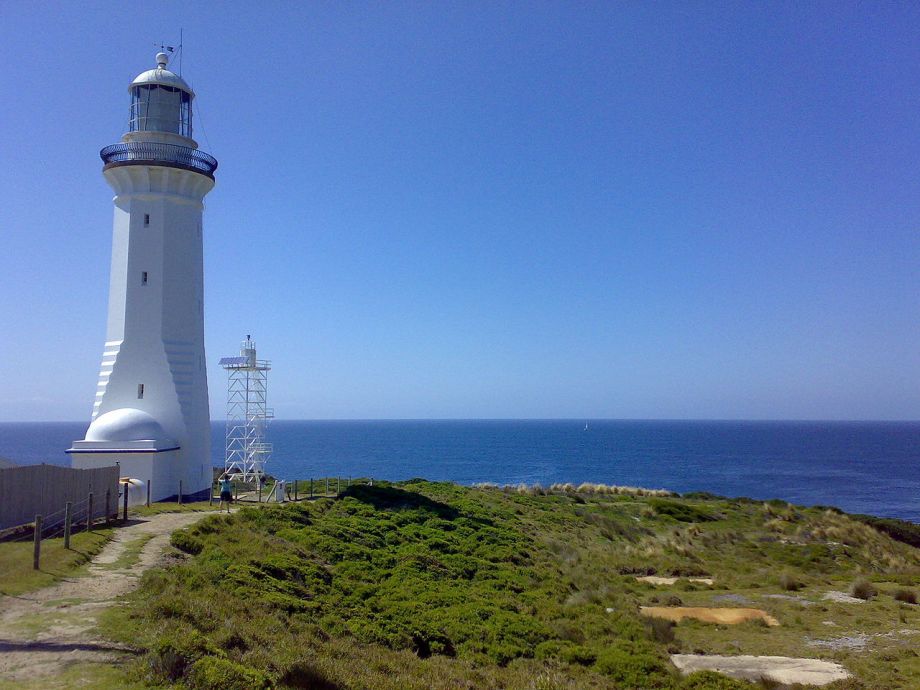
Green Cape Light. The current light is the skeletal tower to the right of the original tower. Photo by and courtesy of Claudio Cadosch
The original apparatus, still mounted in the lantern, is a Chance Bros. 1st order revolving Fresnel lens dioptric. Its light characteristic was one flash every 50 seconds and it was visible to 19 nautical miles (35 km; 22 mi). The light source was a four-wick kerosene-burning lamp with an intensity of 100,000 cd.
In 1910 the light source was replaced with a Douglas vaporised kerosene burner and a glass chimney around a silk mantle, made by Chance Bros.
In 1913 it was recommended to change the light characteristic to a white flash every 10 seconds. However, it took 16 years until this recommendation was accepted, in 1926. Previous to that, in 1923, light source was upgraded to a Ford Schmidt burner which increased the intensity of the light to 327,000 cd.
In 1962 the tower was electrified with diesel generators serving as the power source. The manual winding system was also replaced with an electric motor.
In 1992 a solar powered lens on a modern lattice skeletal steel tower was constructed right next to the historic tower, and the light was officially turned off on 17 March 1992. The new light operates a 36 W lamp with an intensity of 37,500 cd.
In February 2011, the lighthouse was recognised as an "Engineering Heritage National Landmark" by Engineers Australia.
The grounds are open to the public, and the tower is open to guided tours on some days of the week. Reservations for the guided tours are recommended. Accommodations are available in the two assistant keepers' cottages which sleep up to six people each.
Green Cape Lighthouse.
This week we present an illustration of the new lighthouse just erected at Green Cape. The sketch shows the lighthouse, the quarry from whence the stone partly used in its erection was obtained, and tho tramway on which the quarried material was drawn to its destination.
Green Capo is in latitude 37deg south and 150deg east longitude and, with the exception of Point Danger, is the most easterly point of Australia. It is situated about 25 miles 'north of the well-known island of Gabo, and about 2<t miles from Eden, Twofold Bay. The necessity for the erection of a lighthouse on this cape was made painfully apparent years ago, but it was not until many gallant men met watery graves and several noble vessels were dashed to pieces on the frowning rocks that action was taken in the matter.
At length it was forced on tho notice of tho Government of the day, and tho talented Colonial Architeot, Mr. James Barnet, was instructed to prepare plans, which he quickly did. Tenders were then called for and duly responded to, and the noble work actually begun on February 18, 1881.
The successful tenderer was Mr. Albert W. Aspinall, a well-known contractor, a colonist of 27 years' standing. He is a relative of the late B. C. Aspinall, of legal and witty fame. Mr. Aspinall has carried out his work in an able and plucky manner, considering the enormous difficulties he had to contend with, several of which were of uniquo character. On the top of the cape there is a large deposit of extremely fine sand, evidently raised from the bed of the ocean by countless storms during the course of ages, and carried by the spray and strong wind on to tho high land. This sand proved a great nuisance to the contractor and his workmen, and a serious impediment to the progress of the work. One day a strong south-easter would shift a hundred tons or so in one direction, covering up tram-line, foundation, walls, &o., several foot in depth, and probably a north-east "wind would tho next day shift as much in an opposite direction, cutting into tho workmen's eyes like shot, and severely trying the patience of the contractor, owing to the necessity for its frequent removal. Tho nearest access by sea to Green Cape is Bittangabee Bay, four miles from the site of the light-house. This is one of the prettiest little harbours on the southern coast, and well worthy a visit from those who love to view nature in her grand and stern moods. Tho mighty cliffs, fully 100 foot high, of blood rod, green and yellow trap rock, as hard as flint and worn into most fantastic shapes, together with tho mighty swarms of sea birds which with discordant screams answer with a mad joy to the eternal boom and roar of tho ocean, these go to make up a scene that would have given a melancholy joy to the nature-loving soul of our Australian poet, Henry Kendall. Nor is an almost perpetual verdure wanting to give variety to the scene, for here flourish tho mountain ash, wattle, gum, apple and other trees.
Communication with Sydney was kept up by the contractor's ketch, running almost daily between Eden and Bittangabee Bay. Up to the 15th day of May, 1882, special messages had to be sent overland to Eden telegraph office, 24 miles from the Cape works, but on that date telegraphic communication between Green Cape and Sydney was accomplished, and an operator arrived and occupied an office built for him on Queen's Hill by the contractor. That this lighthouse telegraph station is a most useful and important one will be readily perceived from the fact that vessels from England are usually sighted at Green Cape first, and at once reported to Sydney.
The metal for the concrete lighthouse and the stone for keeper's quarters, &c, was quarried or blasted from the base of tho northern cliff and hauled up a tramway at an incline of 40deg by horse-power. The horses operated on a rope on the edge of the cliff, and three horses could haul up a ton.The concrete was hauled up in an iron bucket specially invented by the contractor, at the rate of one cubic yard in five minutes.
The top of the tower is composed of Melbourne bluestone, finely axed. It consists of 16 corbells and 10 gallery stones firmly bolted and iron bound together. The corbells weigh nearly 16 tons, the gallery stones two tons each, and both wore fixed by the contractor himself on the top of the tower. Lime was burned at Bittangabee, and about 200,000 bricks were used in the works. A beautiful spiral staircase, made by Mr. Gommesen, of Newtown, gives access to-the top of tho tower.
The whole of the work was carried out under the supervision of the Colonial Architect and his officers. The land at the site of the lighthouse is about 100 feet above the level of the sea, and the revolving light when fixed will be 200 feet above the same level. The illuminating power will be given by what is known as a "first order holophotal dioptric white light, with flashes every minute." It is expected the formal opening will take place in about three months. Green Cape Lighthouse. (1883, May 26). Australian Town and Country Journal (Sydney, NSW : 1870 - 1907), , p. 24. Retrieved from http://nla.gov.au/nla.news-article70999729
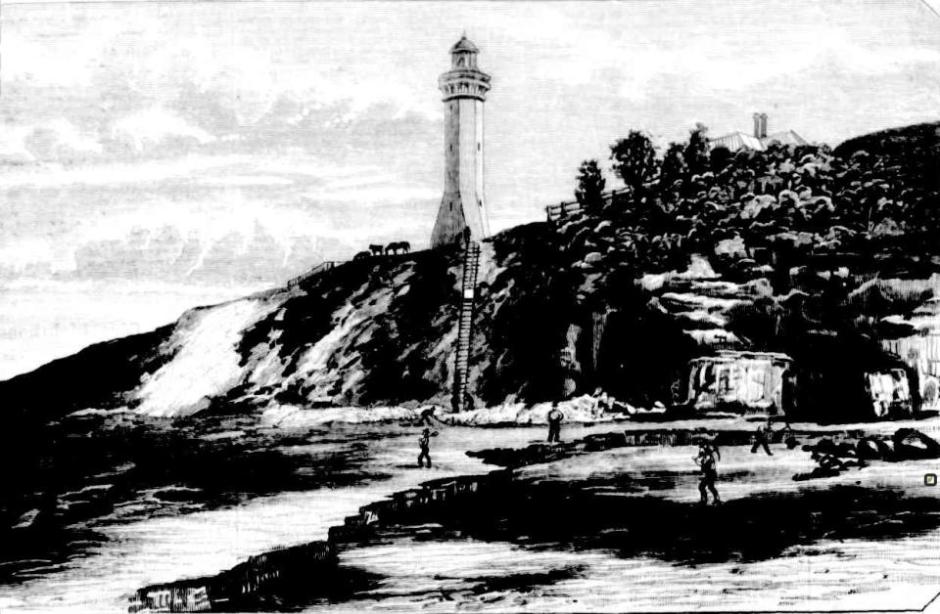
Captain Skelton of the Green Cape Lighthouse
By Our Eden Correspondent.
The position of Green Cape Lighthouse, which is near the southernmost boundary of this colony, was perhaps, broight most vividly before the minds of the people of this colony and elsewhere by the wreck of the ill-fated Ly-ee-moon, on the 30th May, 1886. One night, when nothing could be heard but the roar of the mighty waves on a rocky coast, when the bright light from the beacon sent its revolving, discerning rays far across the ocean, the steamer before mentioned rushed on to its doom. The cries of despair, the scene of horror, will never be erased from the minds of those who witnessed this terrible catastrophe.
The kindness of Captain Skelton, who was then the principal light keeper at Green Cape, will ever be remembered, coupled with that of his wife, who, with much kindness and hospitality, did all in their power to alleviate the sufferings of their fellow creatures. The captain has lately retired from office, and a brief sketch of his life is worthy of notice. He was born in the year 1828. Captain Skelton is now 70 years of age, and looks remarkably well. His first experience of sea was on the Ann Whitly, where he was articled for five years. Before that period had expired the young apprentice had obtained the position of second officer. His next promotion was to the chief officership on board the Lady Jocelyn.
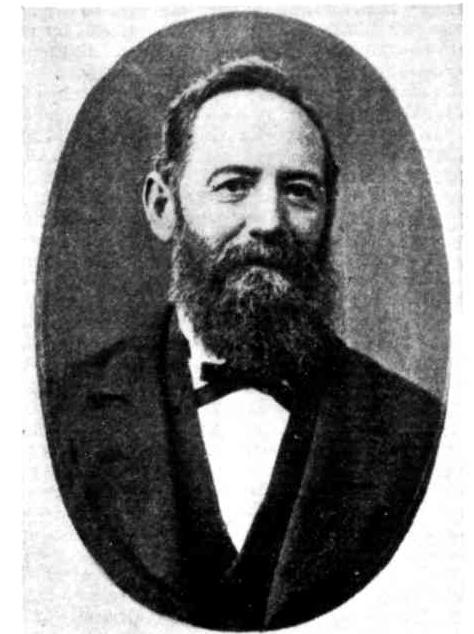
CAPTAIN SKELTON. Late of Green Cape Lighthouse.
From then until 1879 the captain took 'charge of many ships, visited many countries, and travelled many seas. Captain Skelton remembers, clearly the gold-field days of this colony and the difficulties which were experienced in shipping circles in retaining the services of seamen. On one occasion at Launceston, when he was chief officer of the Ralph Thompson, 1852-3, a number of his crew deserted, leaving only four hands, besides the captain, to navigate the ship to Peru, a feat which was, however, safely accomplished. Then the captain, like many another sea captain, has had his experiences of the fearful calamity of a fire at sea. When as chief officer of the Midway, in 1863, the good ship took fire in the harbour of Fort Jackson, and for some hours the pumps were worked with untiring efforts, without, however, the desired effect ; it was then, at the chief officer's instigation, that the sbip was scuttled, and portion of her cargo saved. Captain Skelton retired from seafaring life in 1879, and was appointed first assistant at Solitary Island, where he remained for three years. At the expiration of that time he was appointed to the position of principal light keeper at Green Cape, which office he held, with credit, until March last, when he voluntarily resigned from the Government Service, and retired to his estate at Roseby, situated on the hills overlooking Disaster Bay.
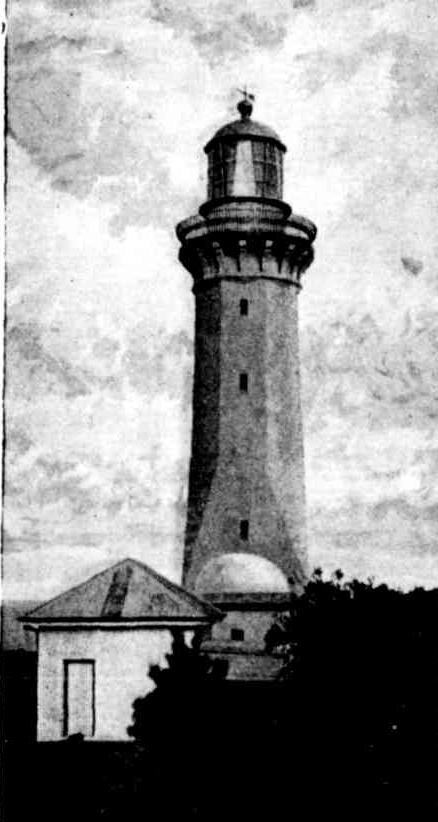
GREEN CAPE LIGHTHOUSE.
The sight of the ocean, the passing of vessels, and the gleam of sand in the sunshine will remind the gallant captain of other days. May the remainder of his life be peaceful and happy. Mr. Daniel Whelan is Captain Skelton's successor, and a worthy officer, too. Mr. Whelan' s untiring heroic services at the wreck of the Ly-ee-moon, has been recognised on different occasions, and he is well fitted to watch the light which is a warning for ' those in peril on the sea.' The photos, of Green Cape Lighthouse and light -house keeper's residence were taken by Mr. W. H. Coulter, of Pambula. Captain Skelton of the Green Cape Lighthouse (1898, July 23). The Sydney Mail and New South Wales Advertiser (NSW : 1871 - 1912), , p. 206. Retrieved from http://nla.gov.au/nla.news-article163810587
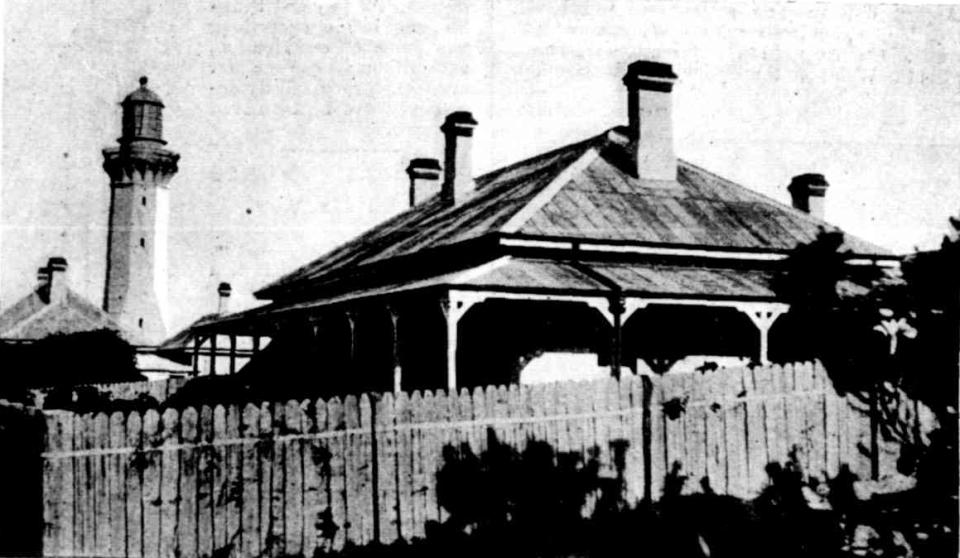
LIGHT-KEEPER'S RESIDENCE, GREEN CAPE. Miscellaneous Mail News. (1898, July 23). The Sydney Mail and New South Wales Advertiser (NSW : 1871 - 1912), , p. 206. Retrieved from http://nla.gov.au/nla.news-article163810589
Green Cape Lighthouse Accommodation, in Ben Boyd National Park, consists of three keepers' cottages, each offering '3.5-star heritage accommodation with open fireplaces and charming nautical decor.'
'Along with a fully-equipped kitchen and dining and lounge rooms, each cottage offers a comfortable verandah, ideal for enjoying the sea air and whale watching. You can take a guided tour of the lightstation and walk part of the Light to Light walk.'
You can take a virtual tour of the Cottages, captured with a Google Street View Trekker and there is a current special offer available, now that the Whale migration season has begun:
Wild About Whales deal: Stay 3, Pay 2 - Stay 3 nights, pay for only 2 nights when you stay at Green Cape lighthouse cottages between 2 May and 31 August 2016.
Fid out more on the Green Cape webpage here
Montague Island Light: Lit 1881
Montague Island Light is an active lighthouse on Montague Island, an island 9 kilometres (5.6 mi) offshore from Narooma on the south coast of New South Wales, Australia. The lighthouse is located at the highest point of the island. The tower is constructed from interlocking granite blocks which were quarried on the island. It is fitted with a bronze handrail. There are two single-storey lighthouse keeper's houses.
The building of a "First Order Fixed and Flashing Light" was first decided 1873, with finance approved in 1877 and tenders called in October 1878. The lighthouse is one of many designed by James Barnet along the New South Wales coast.
The original constructor did not complete the construction due to finance problems. Problems started with an unauthorized blasting by the contractor that damaged the granite boulder selected as base. As a result, the tower was repositioned several feet. After more difficulties and delay the contractor gave up the contract. In 1880 a temporary light was set up, and a new tender was given, with construction completing a year later in October 1881, 4 months early. The official lighting was on 1 November 1881. The light characteristic was a steady flare for 30s, then an eclipse for 13s, then a flash for 4s, then another eclipse of 13s, a total cycle of one minute. The power source was oil, though some reports say kerosene, and the light intensity was 45,000 cd.
The light was upgraded once in 1910 to an intensity of 250,000 cd, with the installation of a Douglas incandescent kerosene burner, and a second time in 1923 to an intensity of 357,000 cd. A Mercury bearings were installed in 1926 and the characteristic changed to a flash every 7.5s
In 1969 the light was electrified, with a diesel generator supplying the power, and the light intensity was raised to 1,000,000 cd. Four panels from Green Cape Lighthouse were fitted, changing the characteristic to one flash every 4.5s.
The original lens was last used on November 9, 1986. It was replaced with an array of lightweight solar powered 12 V quartz halogen lamps radiating two beams of 120,000 cd, and a total power consumption of 75 W.
The original Fresnel lens was packed prism by prism in individual cases surrounded by expanding foam and sent to Sydney for storage. After public volunteering and fund collection for constructing a proper display, the lens was officially transferred back on 10 August 1990 to be displayed in the Lighthouse Museum at Narooma (36.2165°S 150.1275°E), where the lens and mechanism are currently displayed in a 5 metres (16 ft) tower. Visitors can coin-operate the display.
Light keepers
Name Rank Years
John Burgess Head 1881–1898
Charles Townsend Assistant 1894
Jock Cameron Assistant 1920–1923
Head 1933–1935
Tom Paddon Assistant 1932–1934
Albert Cottee ?? 1942 – ?
Jack Carmody Head 1960–1967
Bruce Conley Head 1973–1980
John Short Head ? – 1986
The light is operated by the Australian Maritime Safety Authority. The site is managed by the NSW National Parks and Wildlife Service and the NSW Government's Department of Environment, and Heritage
Access to the island is restricted. Access is available only through guided tours from Narooma, and reservations is required. Overnight stays for up to 12 people are available at the keeper's cottage, which has five bedrooms.
Visit the NPWS Montague Island Keeper's Cottage website page:
Built in 1881, the heritage cottage has been lovingly restored in the style of the era, except for one important feature. You’ll have access to all the modern conveniences to ensure your stay is comfortable and relaxed.
Unwind on the wide verandahs and watch for whales out at sea. Steal a moment of solitude in the secluded courtyards and reading rooms, or cook up an island feast in the fully-equipped kitchen.
While on the island take a walk on Montague Island walking track or volunteer to participate in the survey of 120 penguin nest boxes on the island? You’ll help preserve the island colony and guarantee an unforgettable experience.
Take a virtual tour of Montague Island Head Lighthouse Keeper's Cottage captured with Google Street View Trekker.
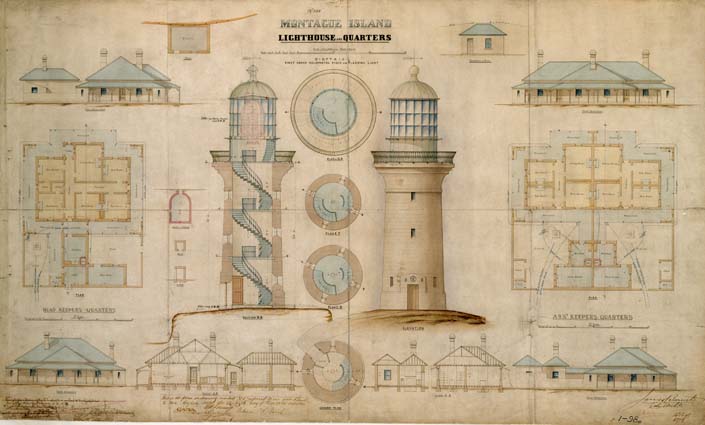
Original plans for the Montague Island lighthouse, 1878. Retrieved from National Archives of Australia: http://recordsearch.naa.gov.au/SearchNRetrieve/Interface/ViewImage.aspx?B=4957044&S=1
Sugarloaf Point Light: Lit 1875
Sugarloaf Point Light, also known as Seal Rocks Lighthouse, is an active lighthouse located on Sugarloaf Point, a point about 3 kilometres (1.9 mi) southeast of Seal Rocks, New South Wales, Australia. It guards Seal Rocks, a treacherous rock formation to the south.It is the first lighthouse designed by James Barnet. It is also one of only two towers in Australia with an external stairway.
The first recorded recommendation for building a lighthouse to guard Seal Rocks was made by a committee of the New South Wales Legislative Assembly in 1863. Original intentions were to place the lighthouse on the Rocks, but because of access difficulties the location finally chosen in 1873 was Sugarloaf Point.
Tenders were called in 1874. Construction required building a 1,500 feet (460 m) long jetty, which was used to land the 1,800 tonnes (1,800 long tons; 2,000 short tons) of supplies and materials required for the construction. Construction was completed in 1875 and the light was first lit on 1 December 1875.
The lighthouse is built bricks, cement rendered, and painted white. The tower has two stories, divided by a concrete floor, the fuel store being located in the ground level. An outside bluestone stairway reaches this floor, followed by internal iron stairs. The total height to the lantern room is 6.7 metres (22 ft).
On top of the tower is a bluestone gallery, the projecting part being supported by concrete corbels, a Barnet design hallmark. The gallery has an elegant black gunmetal railing, another Barnet hallmark. The lantern roof is a copper dome.
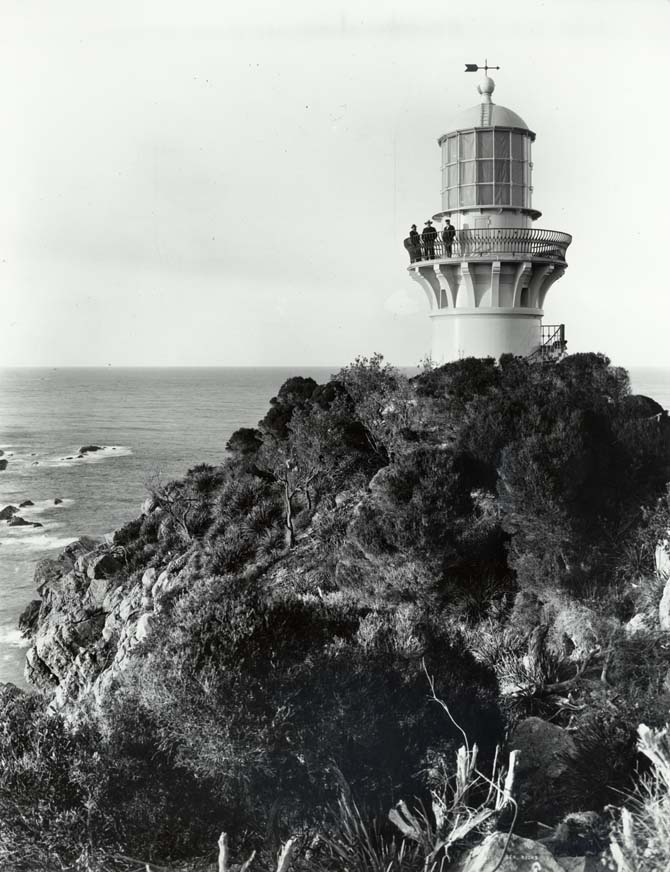
An historic view of Sugarloaf Point Lighthouse, Image No.: 4481_a026_000561, courtesy NSW State Records.
A brick-paved walkway surrounds the base of the tower, enclosed by a 4 feet (1.2 m) high cement-rendered brick wall, painted white.
Near the lighthouse are the original Head Keeper's cottage and two semi-detached Assistant Keepers' cottages, designed by Barnet in 1875.
North of the tower is a flag semaphore signal station. Next to it is the original concrete flagstaff base which retains some of the original iron fastenings. The flagstaff itself is recent.
Other structures in the complex include a gabled roofed generator shed behind the Head Keeper's cottage, a painted brick workshop room behind the shed, a paint store to the north of the Assistant Keepers' cottages, and a garage.
The original lens, still present, is a first order Chance Bros. sixteen-panel Fresnel lens dioptric. The original light source was a kerosene lamp with a light intensity of 122,000 cd. This was upgraded in April 1923 to a carbide lamp with an intensity of 174,000 cd.
In June 1966 the light was converted to electricity and the intensity raised to 1,000,000 cd. and automated in 1987, though a caretaker remained on the site until 2006-2007, when the residence was renovated to be used for tourist accommodations. The last caretaker was Mark Sheriff, who was previously stationed in Green Cape Lighthouse.
Sugarloaf Point Light. (2016, January 2). In Wikipedia, The Free Encyclopedia. Retrieved from https://en.wikipedia.org/w/index.php?title=Sugarloaf_Point_Light&oldid=697859951
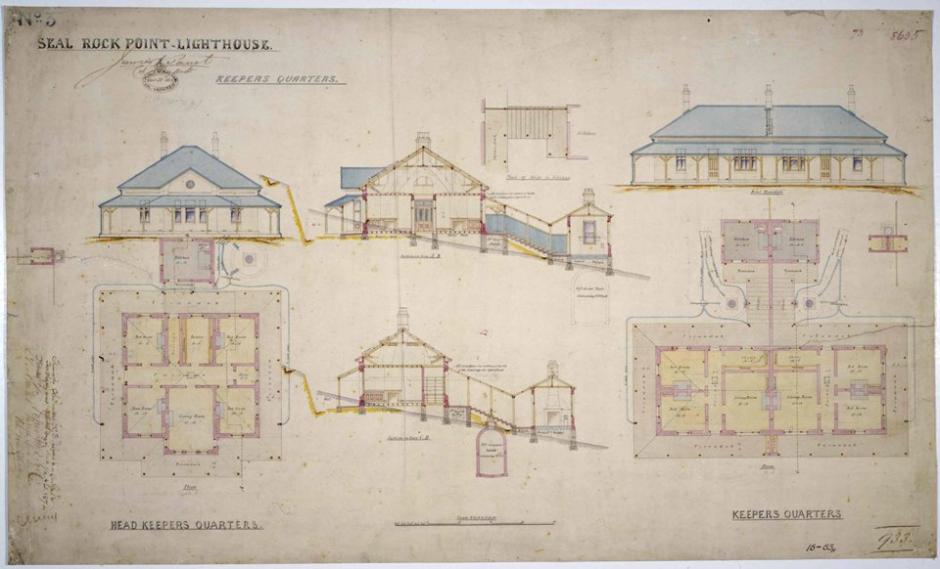
Seal Rock Point Lighthouse: Keepers Quarters [James Barnet - NSW Colonial Architect] - 1873, Retrieved from Australian National Archives: http://recordsearch.naa.gov.au/SearchNRetrieve/Interface/ViewImage.aspx?B=4957060
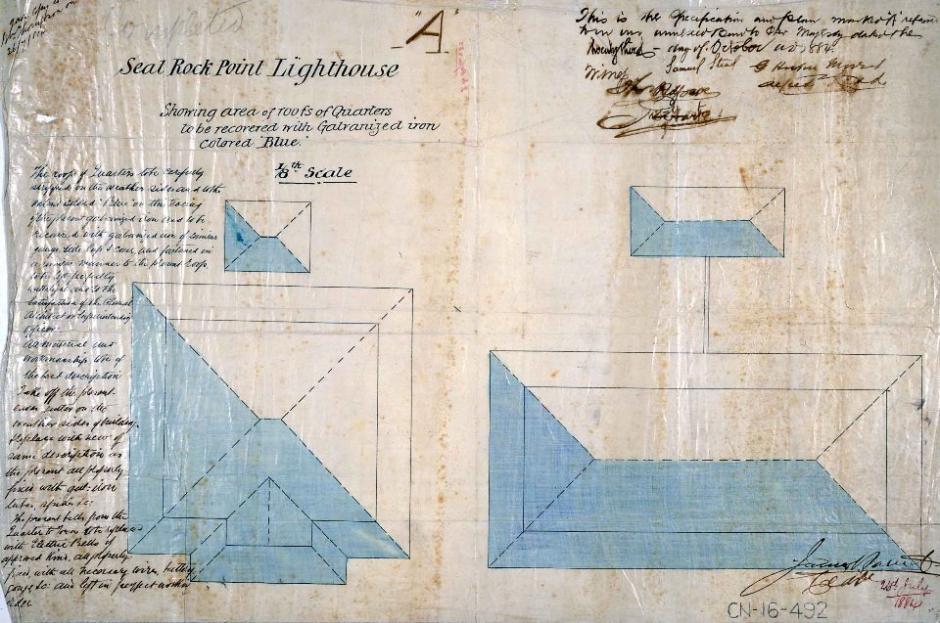
Seal Rock Point Lighthouse: Showing area of Roof of Quarters to be covered with Galvanised Iron Colored Blue [James Barnet - NSW Colonial Architect] - 1884, retrieved from Australian National Archives:http://recordsearch.naa.gov.au/SearchNRetrieve/Interface/ViewImage.aspx?B=4957066
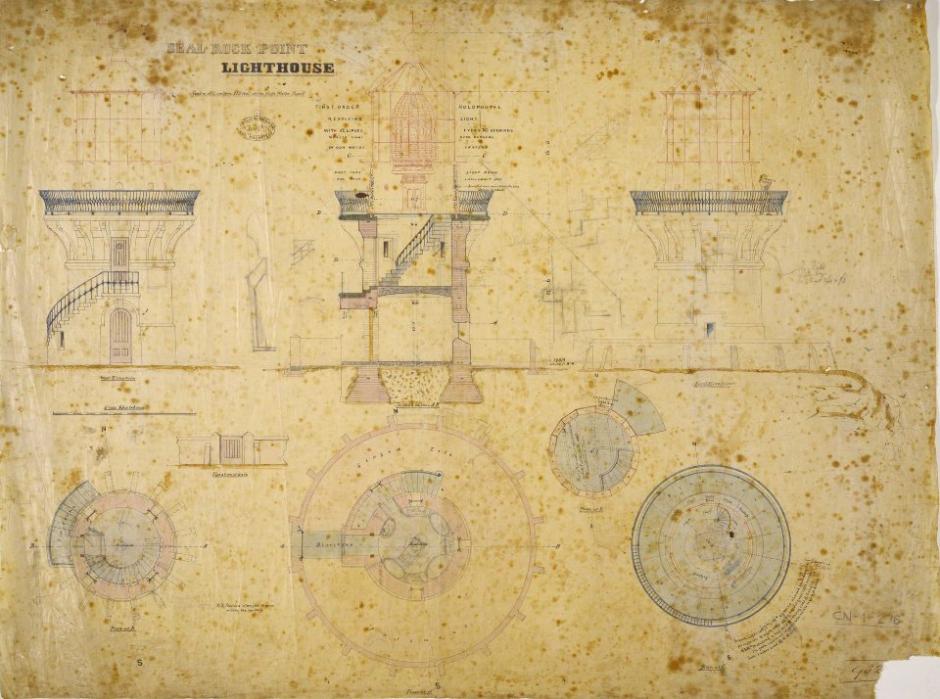
Seal Rock Point Lighthouse: Centre of lantern 258 feet above high water mark, 1874, Retrieved from Australian National Archives:http://recordsearch.naa.gov.au/SearchNRetrieve/Interface/ViewImage.aspx?B=4957063
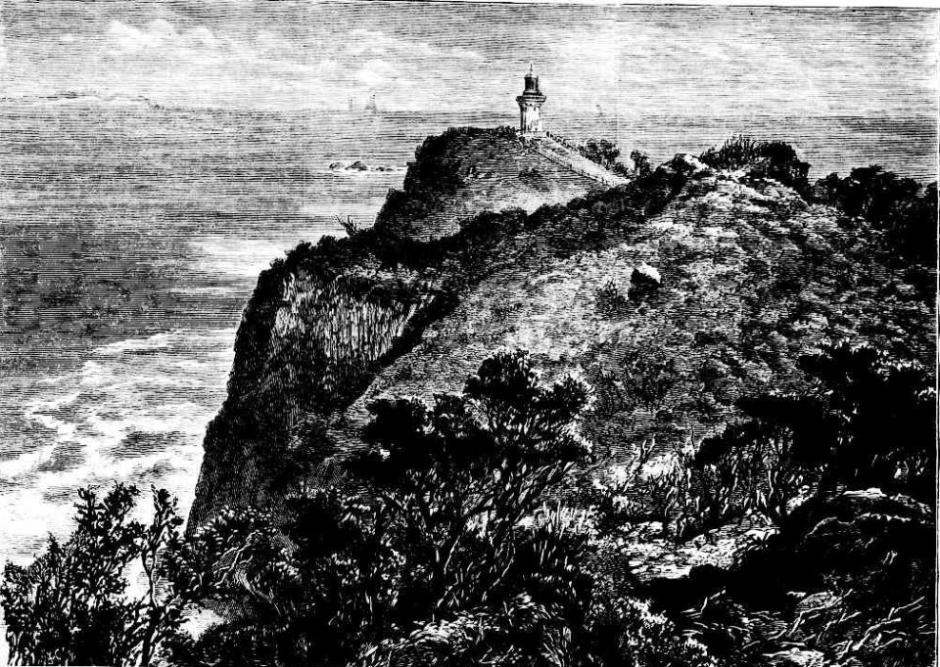
SEAL ROCK LIGHTHOUSE.
SEAL ROCK LIGHTHOUSE.
This Lighthouse is erected on Sugar Loaf Point, which is a projection of the mainland to the north of Port Stephens, New South Wales. It is a very picturesque spot and a pro-minent turning point for coasters between Queensland and the southern colonies. From one to two miles to the south-eastward of Sugar Loaf Point are the Seal Rocks, so-called from the animals of that name frequenting them.
It was a very debatable point whether to erect the lighthouse on the Inner Rock or on its present site; but the latter was deter-mined on after much careful consideration and investigation. The Inner Rock is about a mile and the outer about two miles distant from the mainland. The coasting steamers always pass inside the rocks and under the lighthouse, and thus afford to the passengers an exceedingly interesting spectacle. SEAL ROCK LIGHTHOUSE. (1877, December 22). Illustrated Sydney News and New South Wales Agriculturalist and Grazier (NSW : 1872 - 1881), , p. 9. Retrieved from http://nla.gov.au/nla.news-article63334677
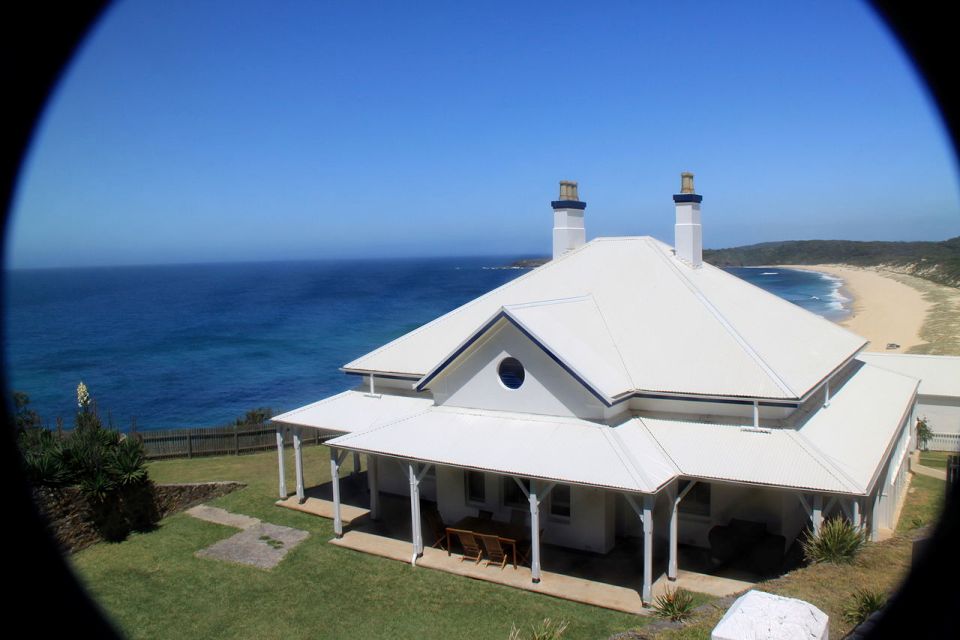
One of the renovated lighthouse keeper's houses near Sugarloaf Point Lighthouse, photo by and courtesy of Rob Frreijs
Sugarloaf - Seal Rocks Lighthouse Accommodation, at the northern end of Myall Lakes National Park, are the Lighthouse Keepers’ quarters and outbuildings that have been refurbished to offer holiday accommodation for visitors.
Lighthouse Accommodation in Australia
Retrieved frim Lighthouses of Australia Inc. At: www.lighthouses.org.au/lights
NSW VIC TAS SA WA QLD NT
Cape Byron Cape Nelson Cape Bruny Cape Borda Bathurst Point Cape Capricorn Cape Don
Smoky Cape Cape Otway Tamar River Cape du Couedic Cape Leveque
Green Cape Cape Schanck Low Head Cape Willoughby
Norah Head Wilsons Prom Swan Island Troubridge Island
Sugarloaf Point Point Hicks Point Lowly
Montague Island Gabo Island
Flagstaff Hill Maritime Village - Lady Bay
Lighthouses of New South Wales and Jervis Bay Territory
North Coast
Fingal Head Cape Byron Richmond River Clarence River North Solitary Island South Solitary Island Smoky Cape Tacking Point Crowdy Head Sugarloaf Point Nelson Head Point Stephens Nobbys Head Norah Head
Outside Sydney Harbour
Barranjoey Hornby Macquarie Cape Bailey
Inside Sydney Harbour
Grotto Point Bradleys Head Fort Denison Robertson Point Parriwi Head Eastern Channel Western Channel Vaucluse Bay - Front Vaucluse Bay - Rear Shark Island
South Coast
Wollongong Head Wollongong Breakwater Kiama Crookhaven Heads Point Perpendicular Cape St George Warden Head Burrewarra Point Montague Island Green Cape
THE LIGHTHOUSES OF N.S.W.
SIGNAL STATIONS AND LAMPS.
BY PETFORD ALLEN.
The Lighthouse lights of the world contribute in no slight measure to the rapid interchange and promotion of commerce everywhere, even considered apart from their essential services to navigation. It Is impossible to overestimate their value to shipping, both as regards the safety of life and the prevention of the loss of millions sterling to trade; whilst it would be a very considerable, record indeed, if all the Instances of averted catastrophe, brought about by their timely rays, could be recorded. In N.S.W. visits of inspection are made by the Marine Board, twice annually, and a high degree of efficiency maintained throughout. This coast is one of the best lit in the world, and as an inspection is now being made, it may be of interest to give a short explanation of the system.
The coast of New South Wales — in length 700 miles— is lighted by 24 lighthouses, of which 12 at least may be called first-class lights—besides numerous lights in harbors and rivers. In addition to the upkeep of these lighthouses, the Government is partly responsible for the maintenance of lights on King's Island, Kent Group, and other places in Bass Straits.
The lamps are lighted every evening at 15 minutes before sunset, and kept constantly burning bright and clear until sunrise. Excepting the Macquarie Light, on the South Head, most of the highway lights are lit with high-grade American kerosene of a flash point by Abel's close test of not under 110deg Fah. High-flash petroleum, or mineral colza, is used in one light, vegetable oil in another, while gas is also used when convenient. A light of the first order is one that has an optic of 6ft all over in diameter; the second order, 4ft 7in; while the power of the light does not necessarily vary with the order.
The Cape Byron and Norah Head lights, the two most recently erected, use the 'feu-eclair' or lightning flash style of 'optic'. The luminous intensity of their beams are 145,000 and 110,000 candles respectively.
THE GEOGRAPHICAL RANGE.
The geographical range of a light — or the distance at which the curvature of the sea's surface hides it from the observer— is practically a fixed quantity, irrespective of the luminous intensity, though it may be influenced by peculiar conditions of atmospheric refraction. When a light cannot be seen at its geographical range, either the light is an intrinsically weak one, or the atmosphere is hazy. Thus, a light 200ft above the sea level, which is stated to be visible at 10 miles only, is manifestly of low power as its height would enable it to be seen 20 miles if the light would carry so far. An observer 15ft above sea level on a ship's deck can see the horizon 4.4 miles distant. The apparent magnifying of the light from the burner is done either by the interposition of lenses or curved prisms of glass in the path of the light, such 'optics' being called dioptric apparatus; or by putting metallic silver reflectors behind the flame, such being called 'catoptric.'
A metallic reflector may be placed on the landward side, and lenses on the seaward one when the light is not required to show all round. Such combined 'optics' are called 'catadiopiric.' Fixed lights are insufficiently distinctive, and hence revolving or flashing lights are employed. A revolving light is one where the duration of the interval of light is longer than the eclipse, and the light, generally increases gradually to its full effulgence, and as gradually diminishes.
Fully equipped signal stations are maintained at Svdney and Newcastle, but flagstaffs with codes of signals are also provided at most of the lighthouses, which are usually connected by telegraph. Vessels passing can communicate with the lighthouses, if necessary, but the primary duties of the lighthouse-keepers are the care and management of the light. Their instructions are, however, as far as possible, without interfering with their duties, to keep a good look-out, and report any signals or other matters which may come under their notice.
THE SOUTH HEAD LIGHT.
The first lighthouse at Sydney Heads was erected in 1817, the foundation-stone of which was laid by Governor Macquarie,' oil being the illuminant, since superseded by electricity in 1883. Up to the time the new tower was completed, the old lighthouse did service a few feet alongside, an interesting spectacle, the two towers so close together. At a lantern height of 345ft, the penetrative brilliance of its electrical rays (equal to five million candles) in the rarefied atmosphere of winter, may often be seen reflected against the sky from a distance of 70 miles at sea.
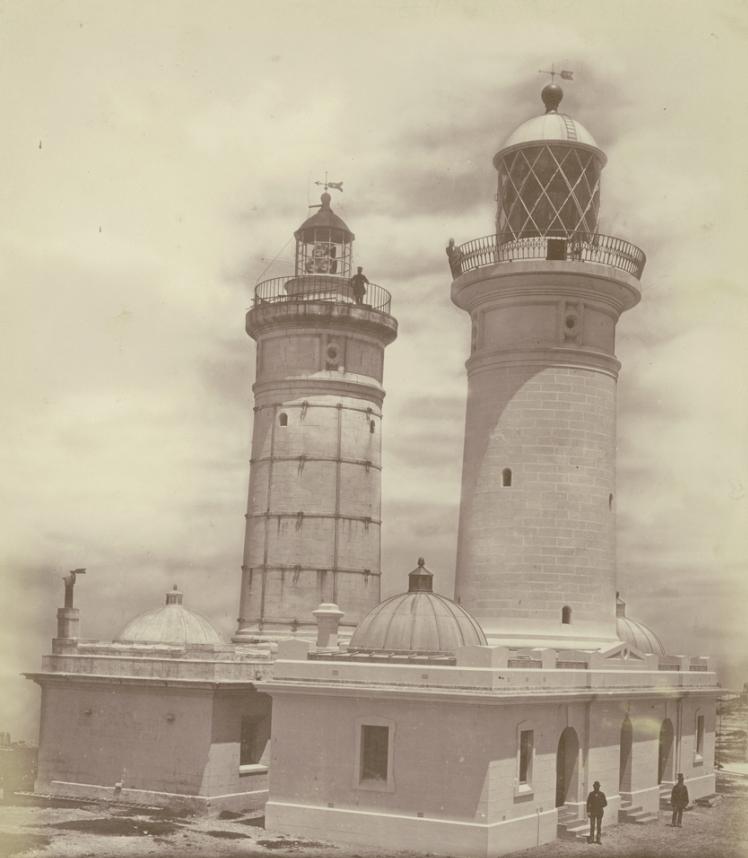
Old and new Macquarie Lighthouse, Sydney, N.S.W., 1884 / photographer New South Wales. Government Printing Office. Image No.: a325014, courtesy State Library of NSW.
In normal weather, to an outward bound ship, the disc of light dips like a double star of the first magnitude below the receding horizon line 26 miles away, leaving behind a faint glow above the waterline for some hours afterwards.
Before the installation of the new light even the old light could often be distinctly seen revolving from Evan's' Lookout, above the Valley of the Grose, 73 miles inland. Owing to the dazzling character of the electric flashes to navigation, however, a screen has been placed on the landward side of the present lantern, and so obscures the harbor.
Siddins, the lifetime lightkeeper of the old light, declared long after taking charge of the new light that under thick, rainy, fog, or hazy conditions, the old oil light had a much greater penetrative action than the electrical light, even when the latter was at its extreme full power, in which opinion he was subsequently supported by the Board of Trade, after exhaustive tests had been made among the lights on the coast of England. The Macquarie, nevertheless, even at the present day, is only excelled by two other lighthouses in the World. Its canopy of sixteen interspersed and intermittent eight -second' flashing one-minute rays, when looked at from the base, is a remarkable scere of moving light— weird and will-o'-the-wisp - like— as it passes the headlands of North Harbor and the North Head. The lantern, with its many tons of crystal glass prisms, completes one revolution every 16 minutes.
The principal lights are: — Cape Byron, white revolving. South Solitary, white revolving. Smoky Cape, white revolving -Seal Rocks, white revolving, with 16 rays and green arc. Point Stephens, white and red (revolving alternately) -Newcastle (Nobbys), white fixed. Norah Head, white revolving. Barrenjoey red fixed. Hornby, white fixed. Macquarie, white revolving, electricity. Point Perpendicular, white revolving. Montagu Island, white revolving. Green Cape, white revolving.
Although the majority of the foregoing are white, the rays are in every case altogether different. No light is precisely the same, which is a vitally important factor. There are also lighthouses at Twofold Bay, Ulladulla, Crookhaven, Kiama, Wollongong, Crowdy Head, Tacking Point, Lagger's Point, Clarence River, Richmond' River, and Fingal Head, all of which may be seen on the diagram map which follows.
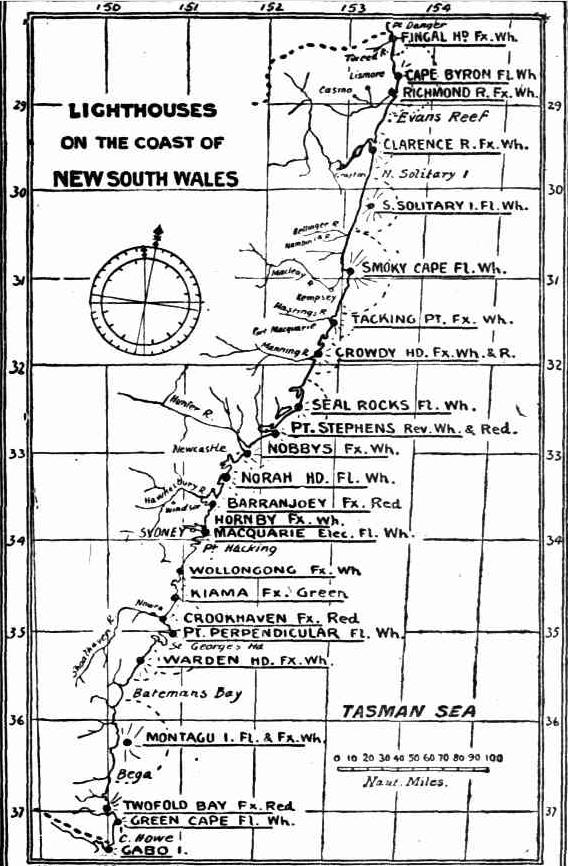

THE LIGHTS OF N.S.W. THE LIGHTHOUSES OF N.S.W. (1909, September 11). Evening News (Sydney, NSW : 1869 - 1931), , p. 6. Retrieved from http://nla.gov.au/nla.news-article114771825
James Barnet
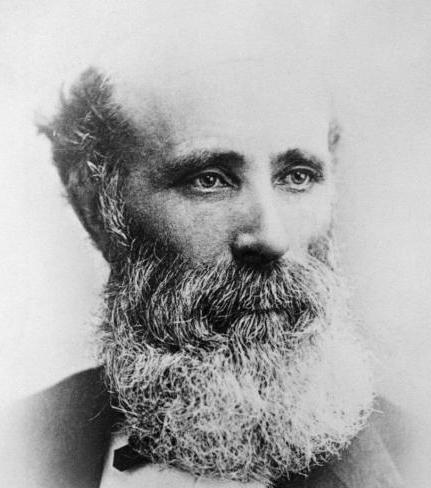 James Barnet (1827 in Almericlose, Arbroath, Scotland – 16 December 1904 in Forest Lodge, Sydney, New South Wales) was the Colonial Architect for Colonial New South Wales, serving from 1862 to 1890.
James Barnet (1827 in Almericlose, Arbroath, Scotland – 16 December 1904 in Forest Lodge, Sydney, New South Wales) was the Colonial Architect for Colonial New South Wales, serving from 1862 to 1890.
He lived all his Australian years in Glebe (Derwent Street in 1865) and Forest Lodge (Braeside, now demolished – on the current corner of Parramatta Road and Ross Street.
The son of a builder, he was educated at the local high school. In 1843, aged sixteen, Mr. Barnet moved to London, where he became a builder's apprentice, studying drawing under William Dyce RA and architecture with CJ Richardson FRIBA. He then became of clerk of works with the Worshipful Company of Fishmongers. In 1854 he married and sailed for Sydney, Australia, with his new wife, Rosa. In Sydney, he worked first as a builder for Edmund Blacket, then became Blacket’s Clerk of Works on the foundations of the Randwick Asylum and went on to undertake the same role when Blacket was working on the Sydney University buildings.
Barnet held the post of Colonial Architect for 25 years during the post-Gold Rush period when the demand across the state for civic buildings was high.He was regarded as a technological innovator and able administrator “who established a pattern of organisation which was to become the prototype for future large architectural offices”.
Barnet's work includes 169 post and telegraph offices, 130 courthouses, 155 police stations, 110 lock-ups and 20 lighthouses. His major works include the General Post Office building in Sydney, Callan Park Lunatic Asylum, the Australian Museum, the Colonial Secretary's building, Lands Department building, and the Anderson Stuart Building at Sydney University.
Major projects
Defence works at Botany Bay, Port Jackson and Newcastle
Court houses, lock-ups, police stations and post offices throughout New South Wales (see Court houses in New South Wales)
Lighthouses, including rebuilding the Macquarie Lighthouse first built by Francis Greenway, and the similarly designed five lighthouses, Richmond River Light, Clarence River Light, Tacking Point Lighthouse, Crowdy Head Light and Fingal Head Light, built in 1878-1880 and Barrenjoey 1881.
Major Sydney public buildings
The Mortuary Station in Rookwood Cemetery circa"' 1865
New wing of the Australian Museum
General Post Office
Colonial Secretary's Building (now called the Chief Secretary’s Building)
Public Works Building and Lands Building
Customs House
Public Library
Medical School Anderson Stuart building at the University of Sydney
Callan Park Lunatic Asylum
East Sydney Technical College
Darlinghurst Court House
Victoria Lodge, Botanical Gardens
Department of Lands building
Parramatta Post Office
Traffic Court No.2, Sydney
North Sydney Post Office (Opened 1889 as St Leonards PO, renamed 1890[3])
Mortuary Station, Central Railway
The Colonial Architect's office was also responsible for maintenance of public buildings. Between 1865 and 1881, Barnet had supervised 1,490 projects. Other roles were assigned to Barnet: for example, he was put in charge of the arrangements for the visit of the Duke of Edinburgh in 1868.
James Barnet. (2016, February 25). In Wikipedia, The Free Encyclopedia. Retrieved from https://en.wikipedia.org/w/index.php?title=James_Barnet&oldid=706797954
Lighthouse Keepers Cottages You Can Rent in NSW - Designed or Inspired by Colonial Architect James Barnet: Historic 'Lit' Days records - collected and collated by A J Guesdon, 2016.